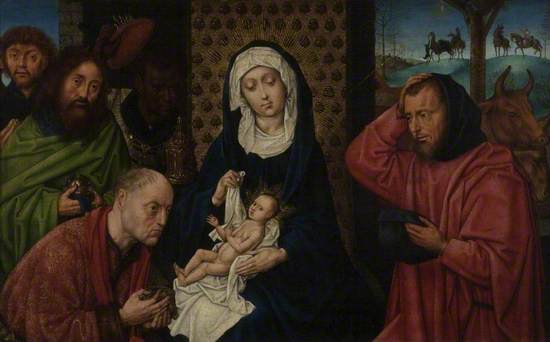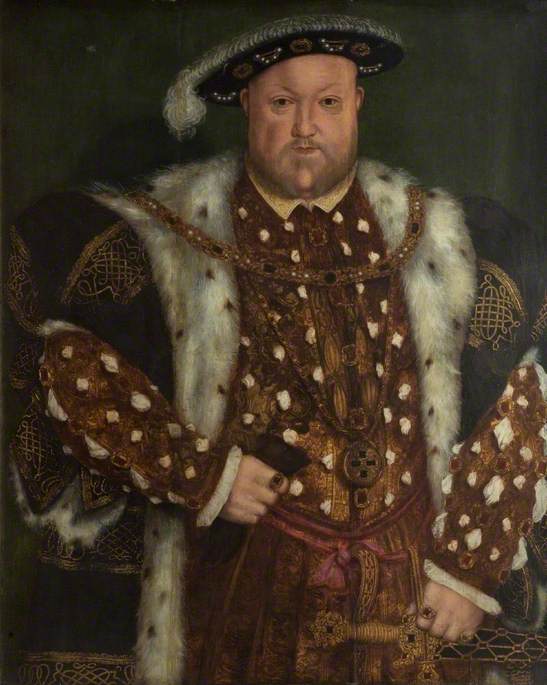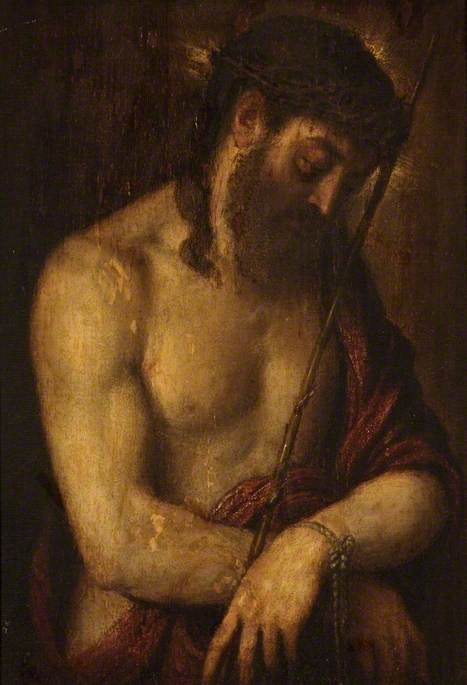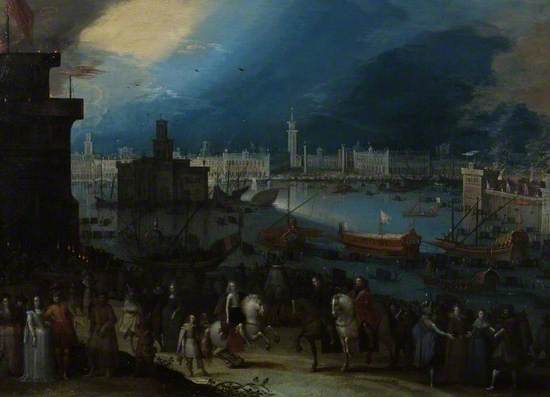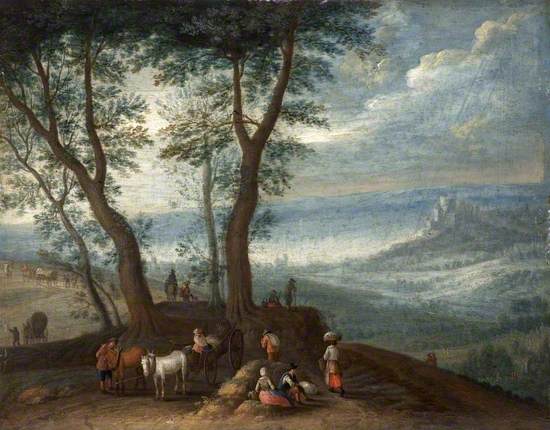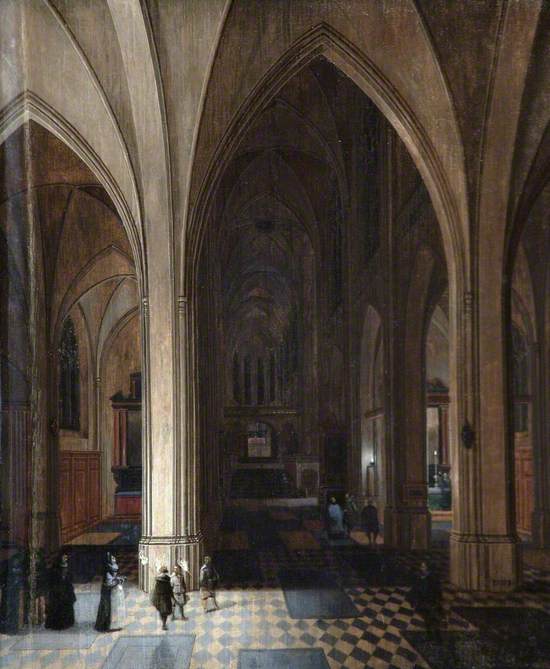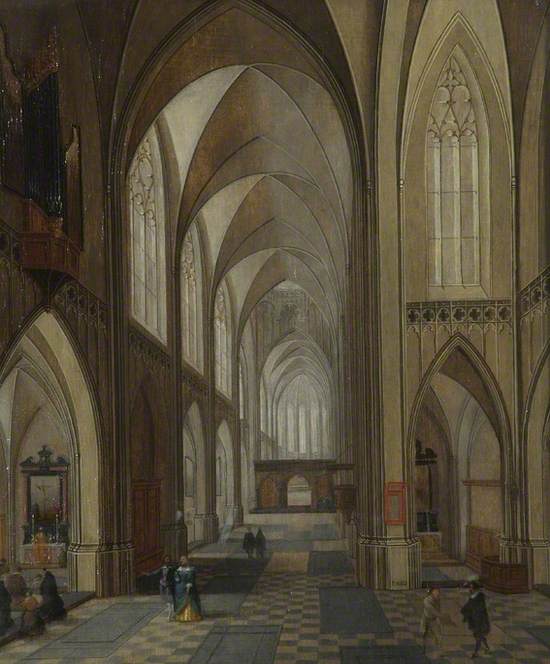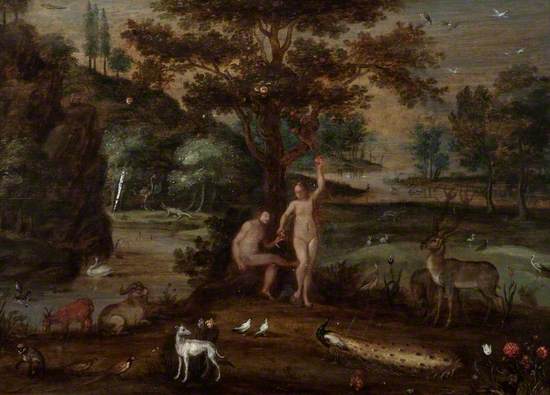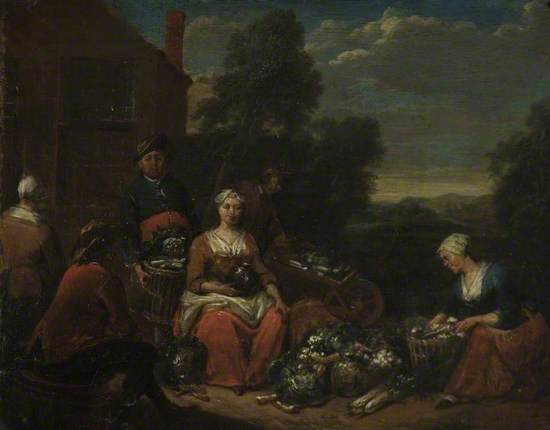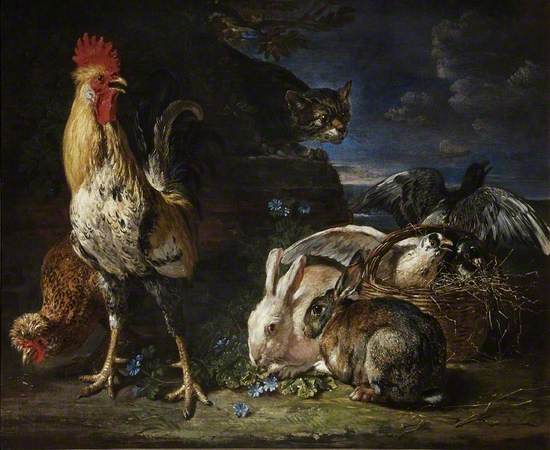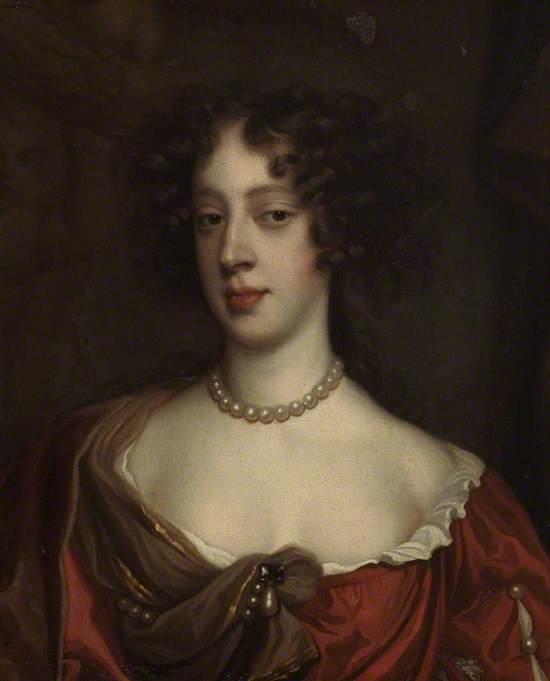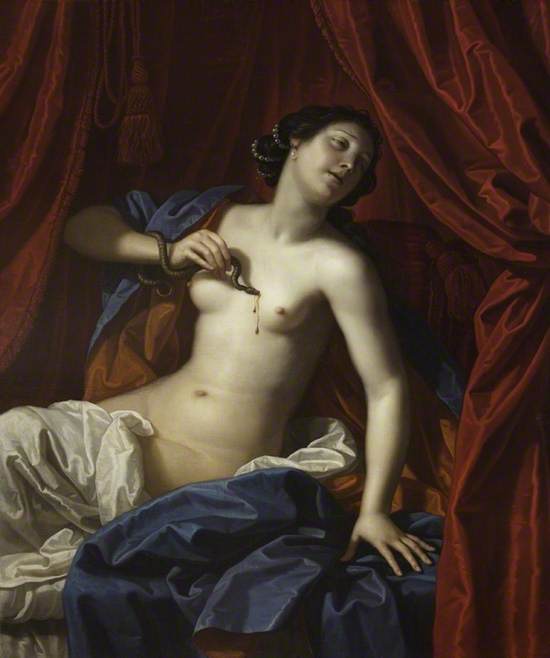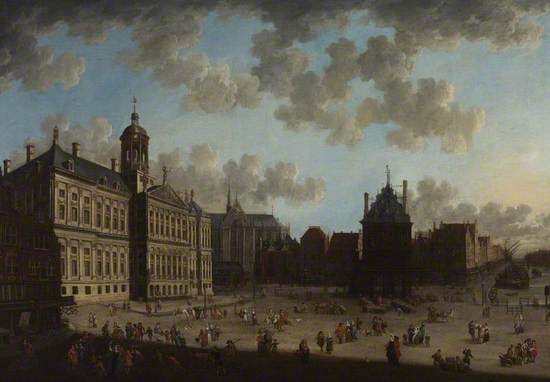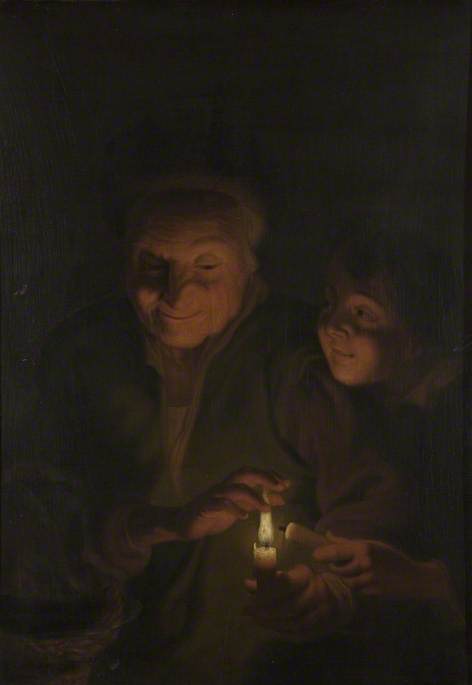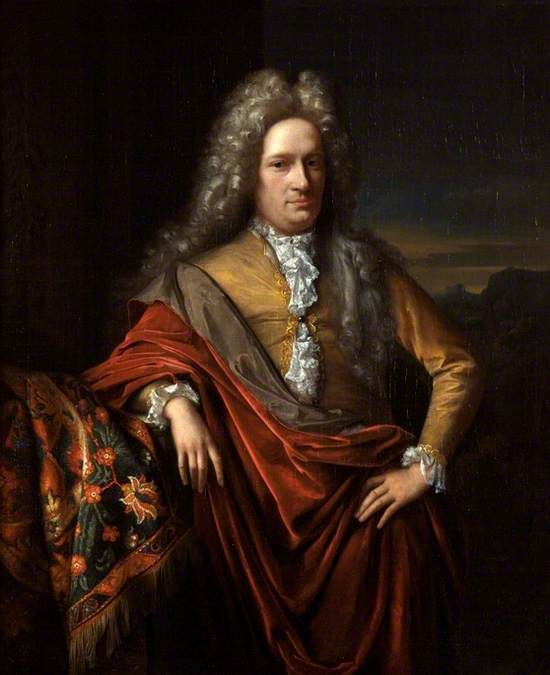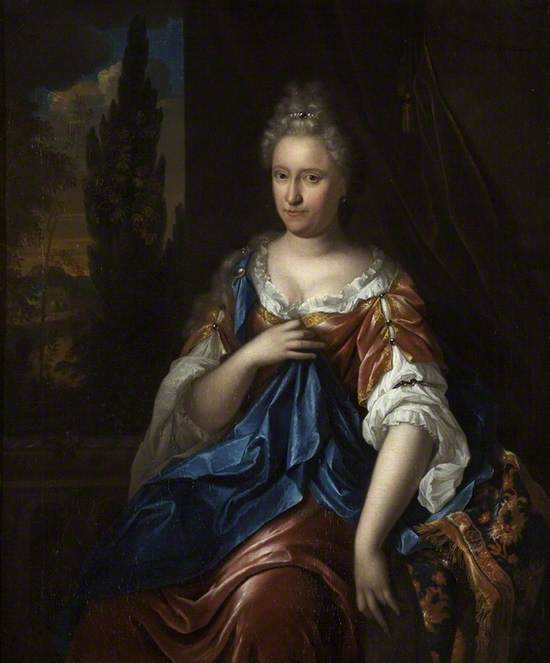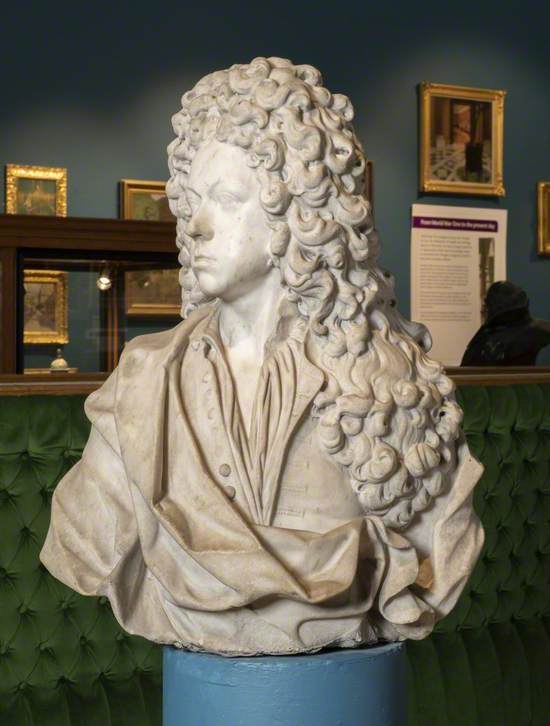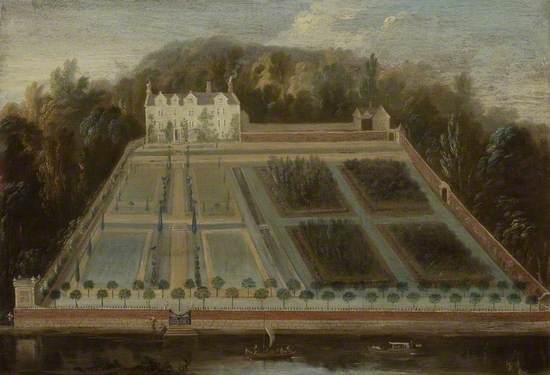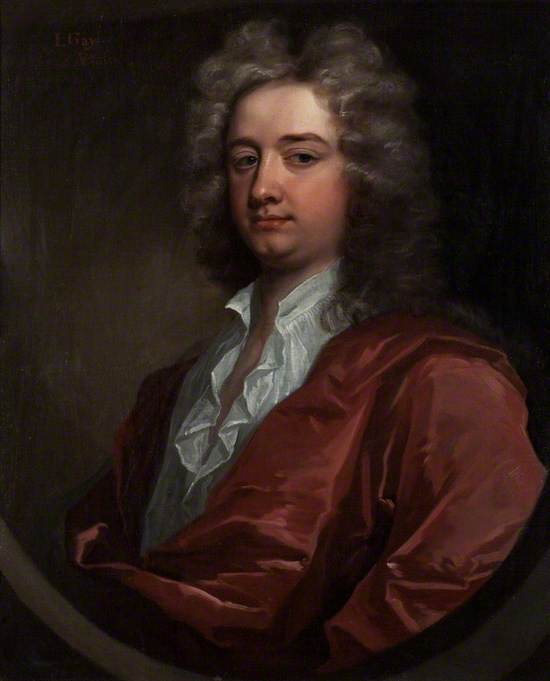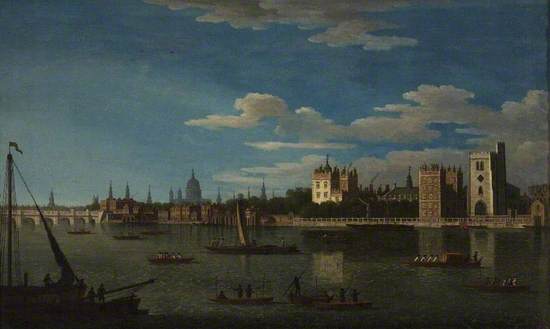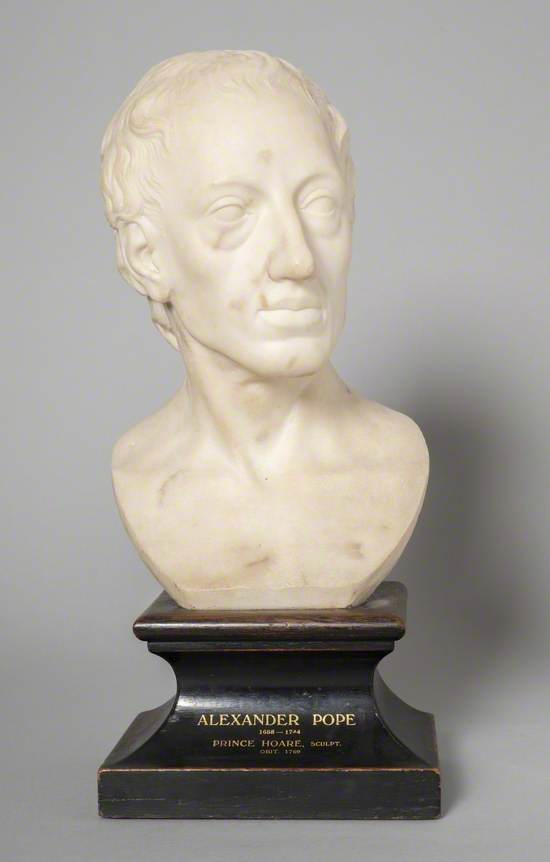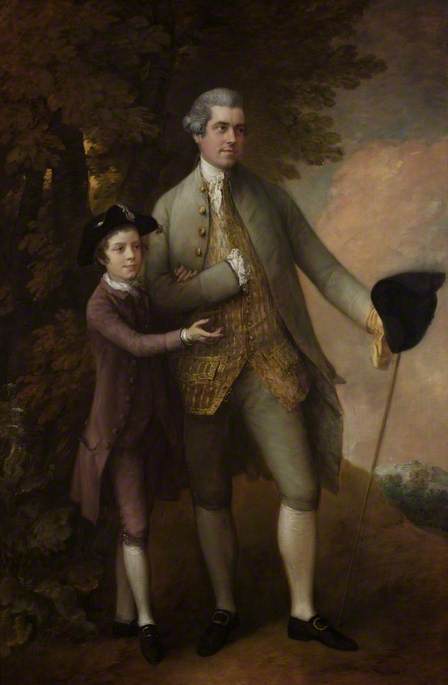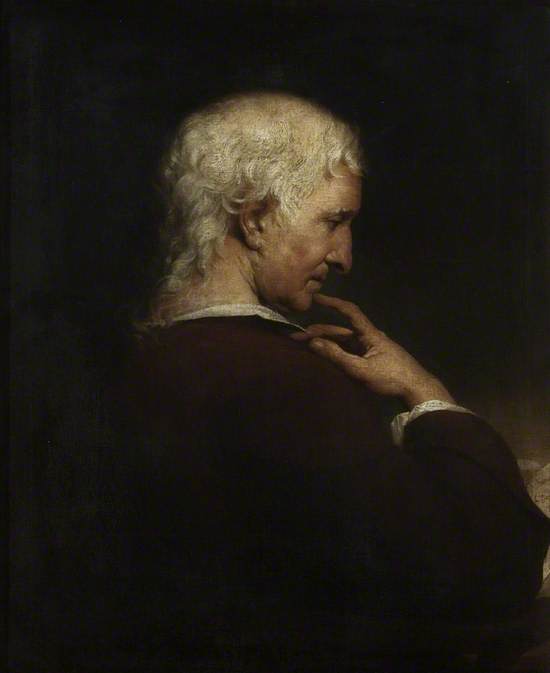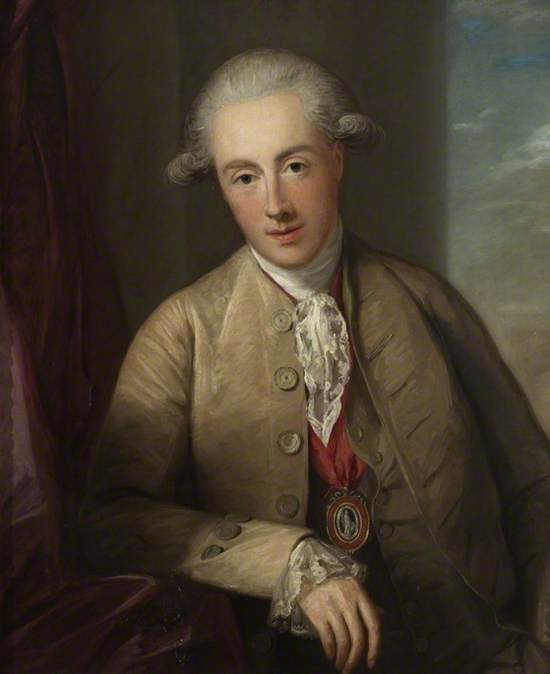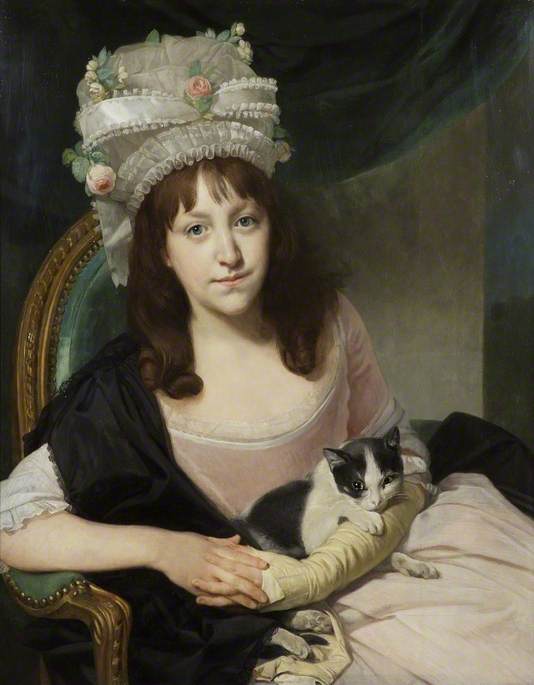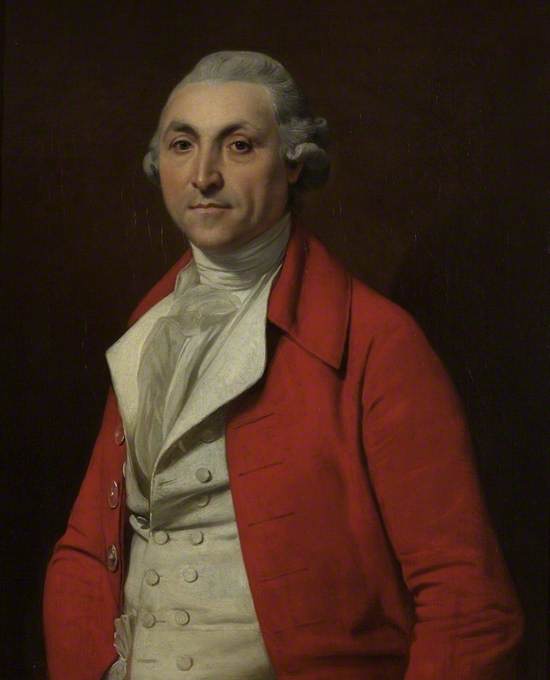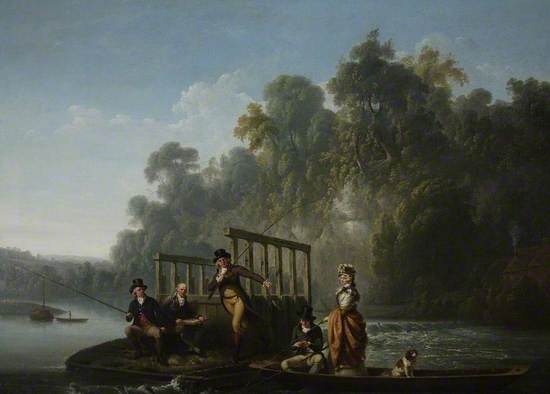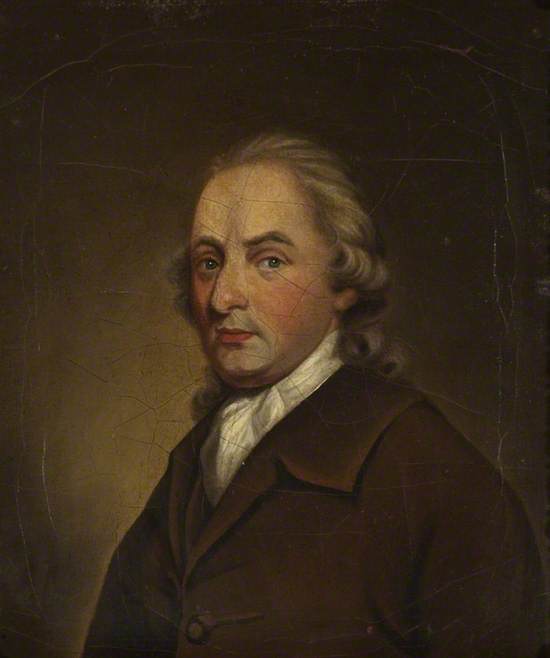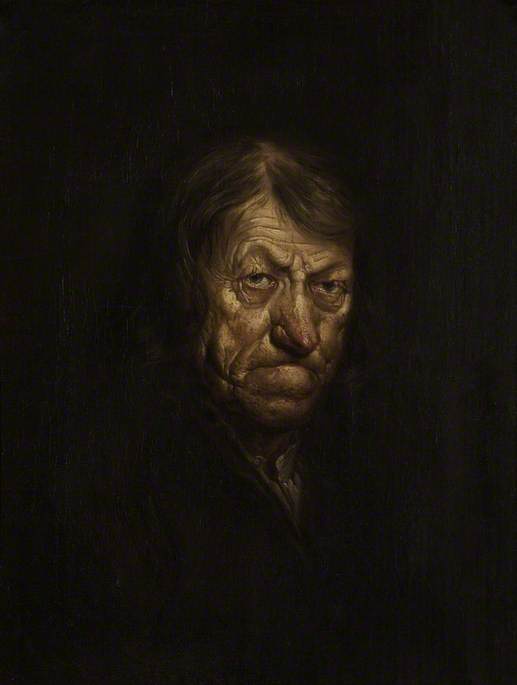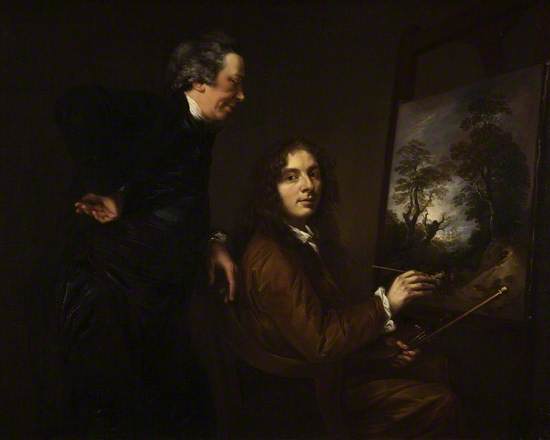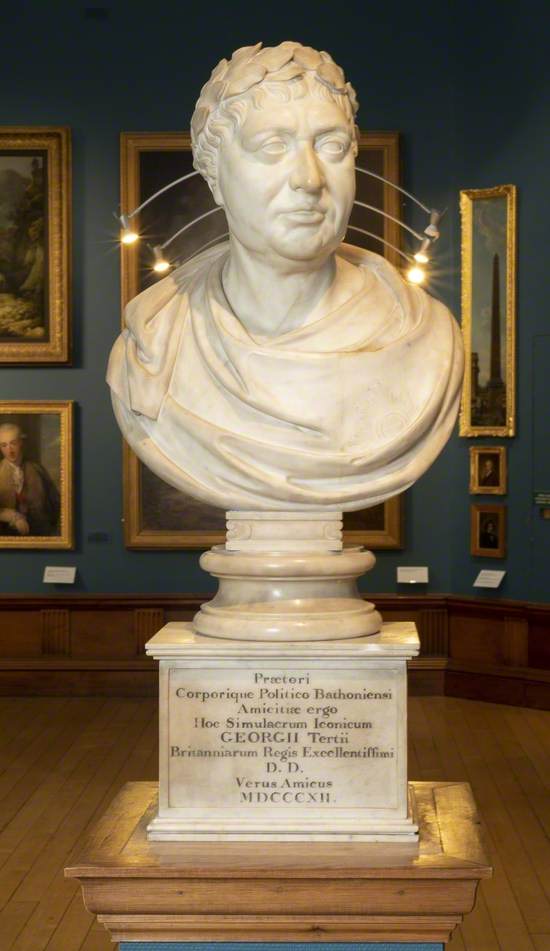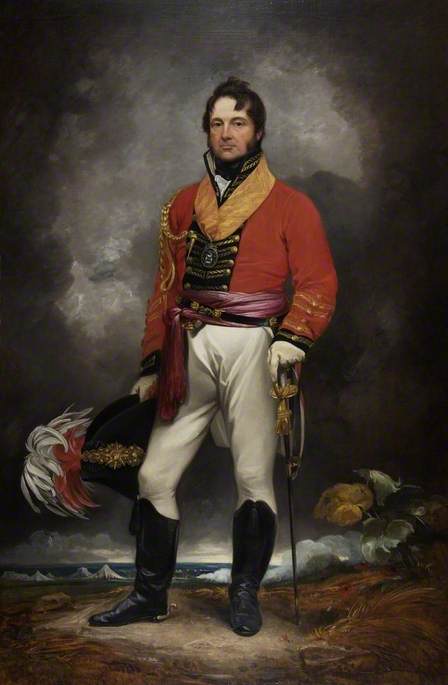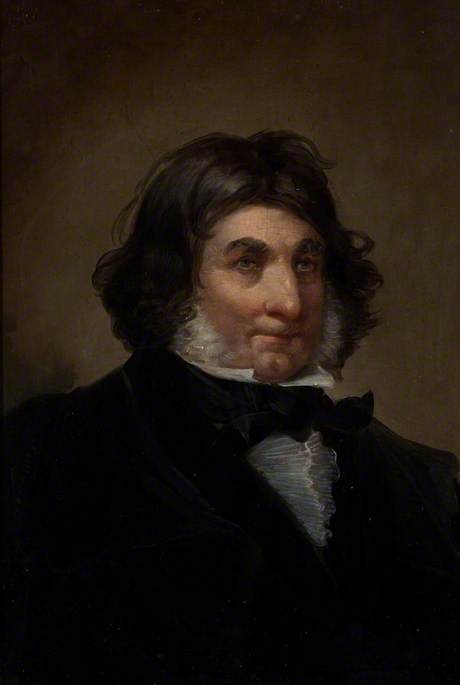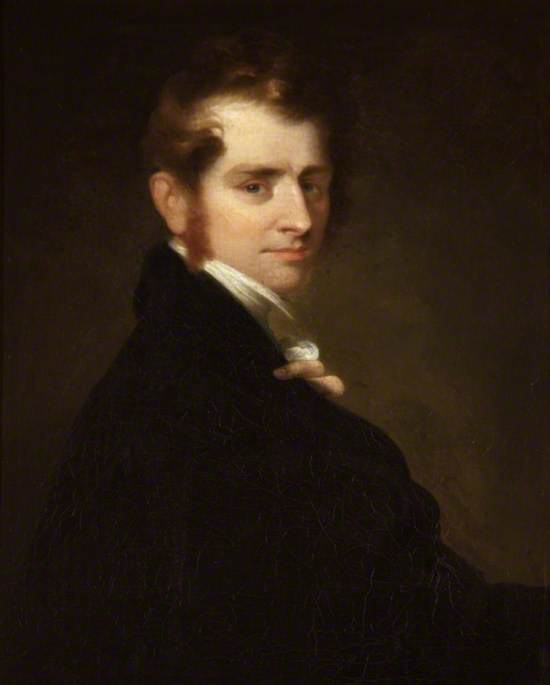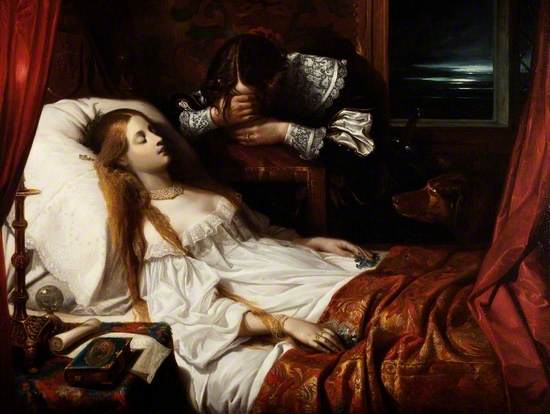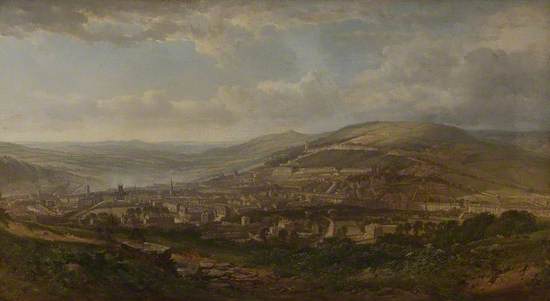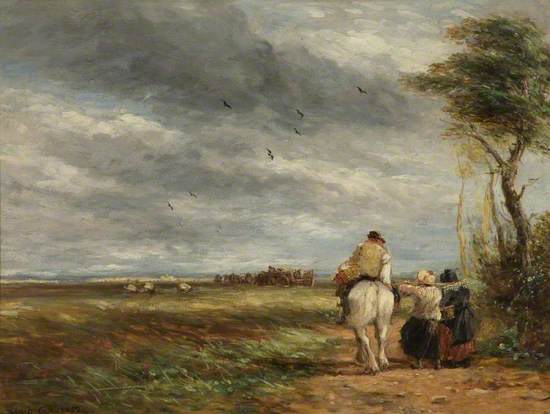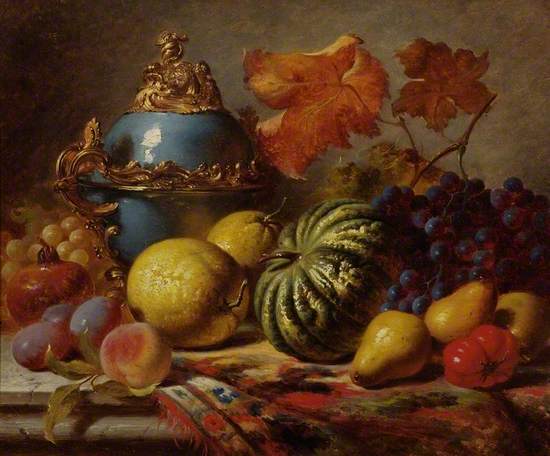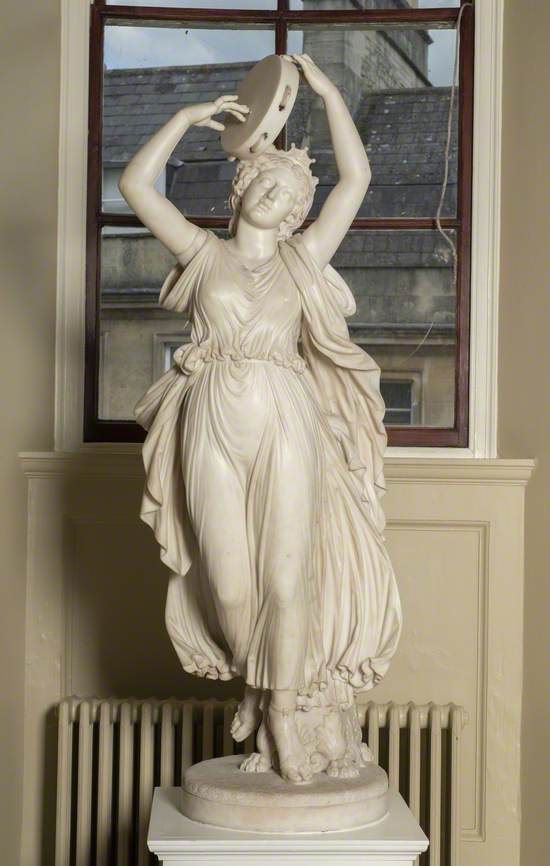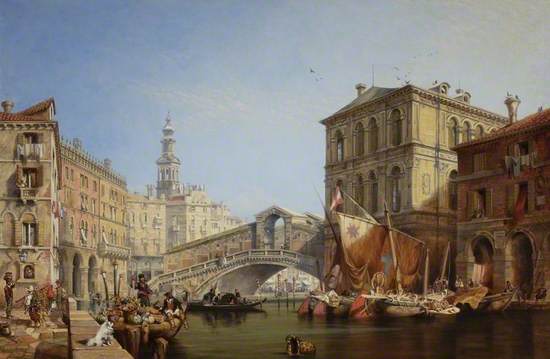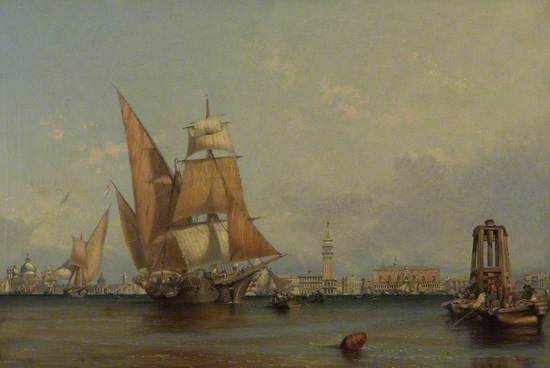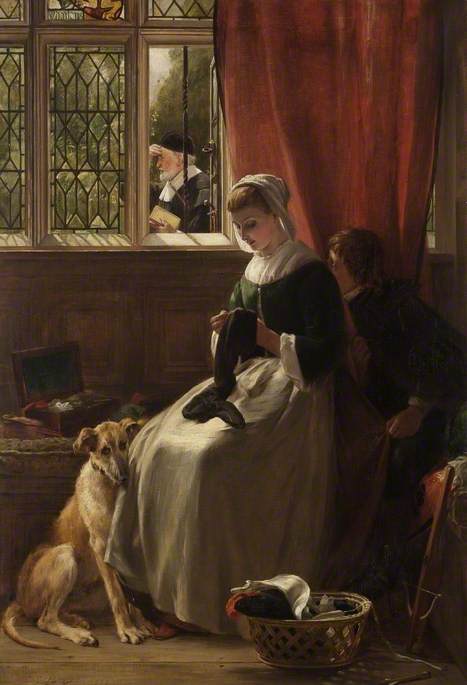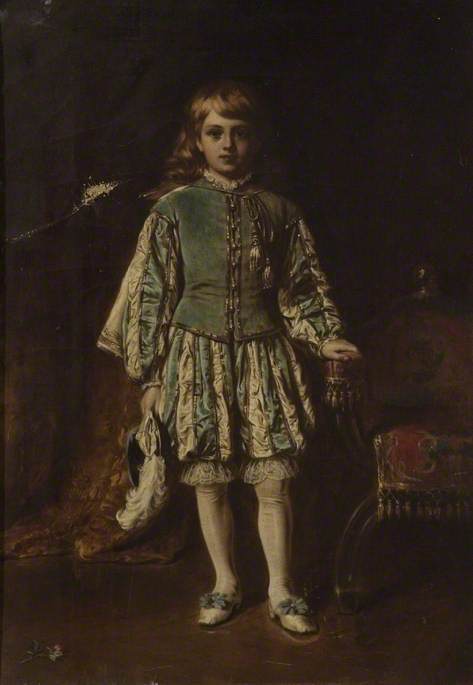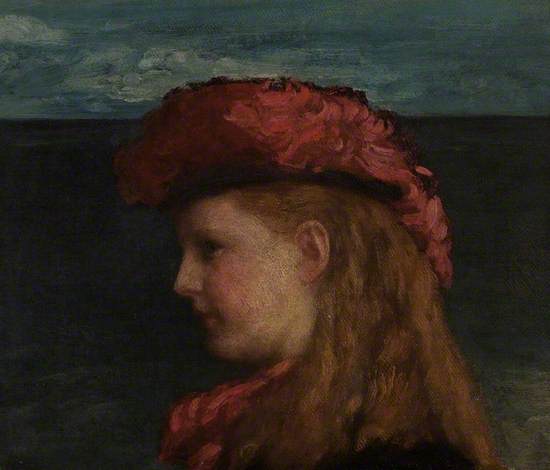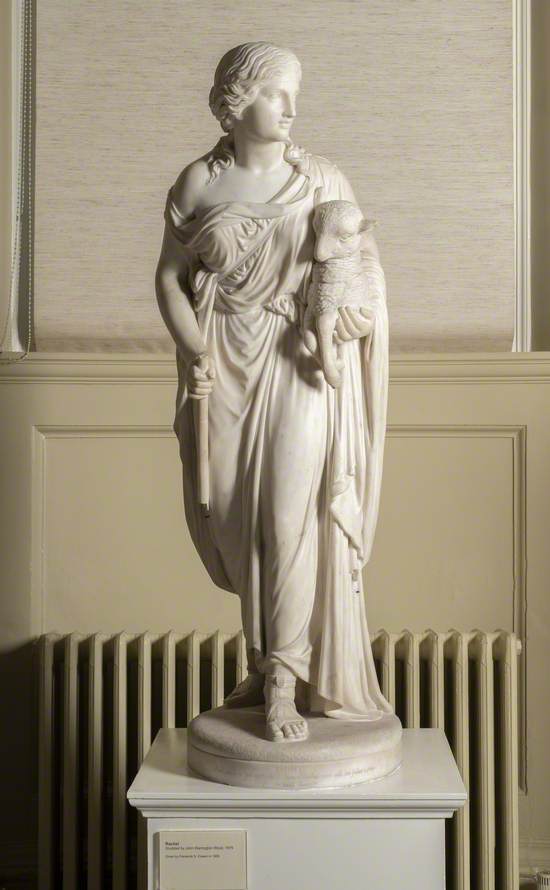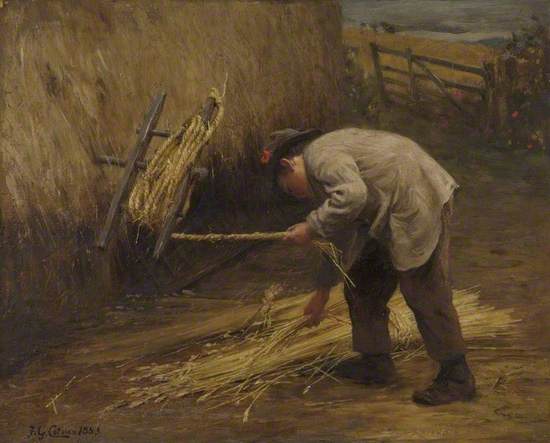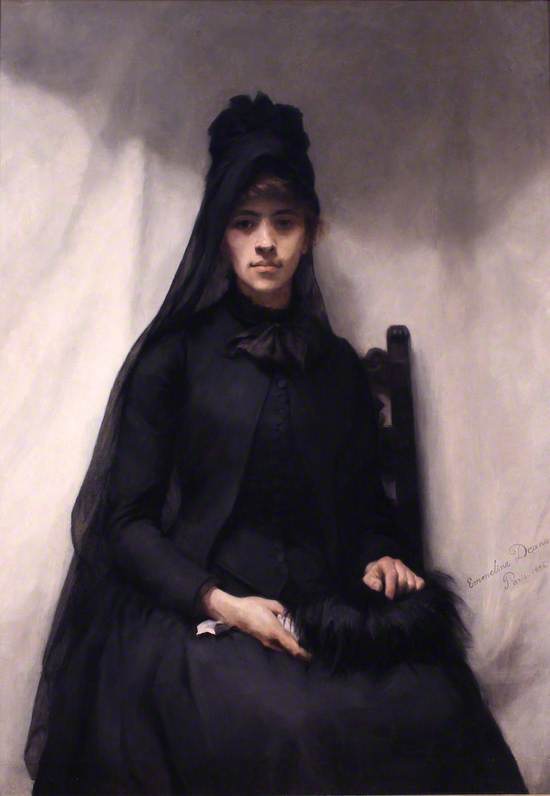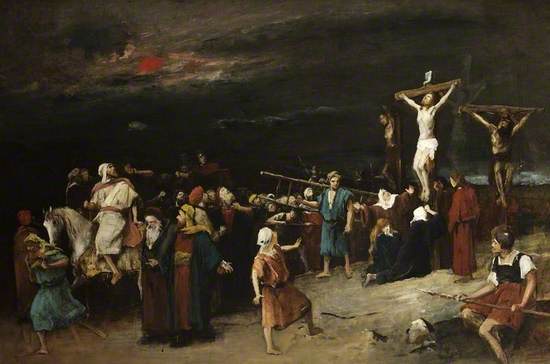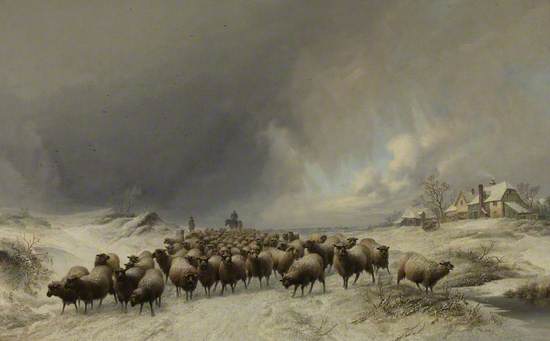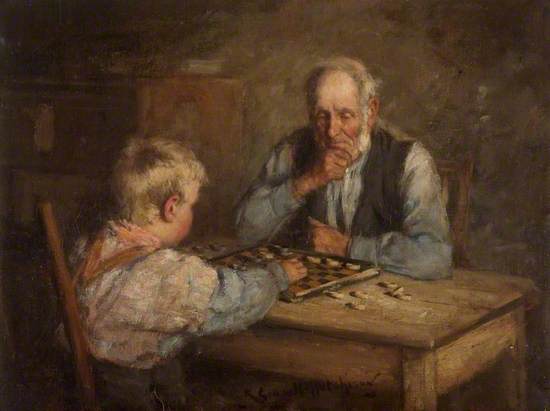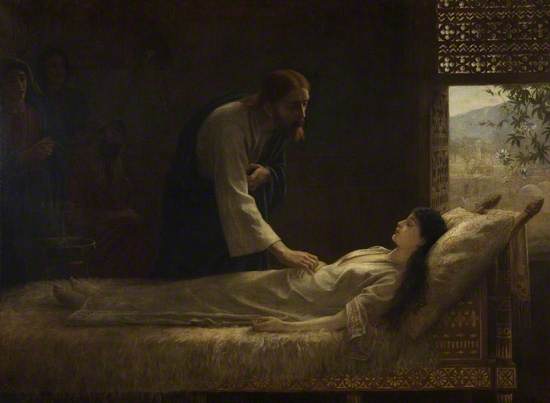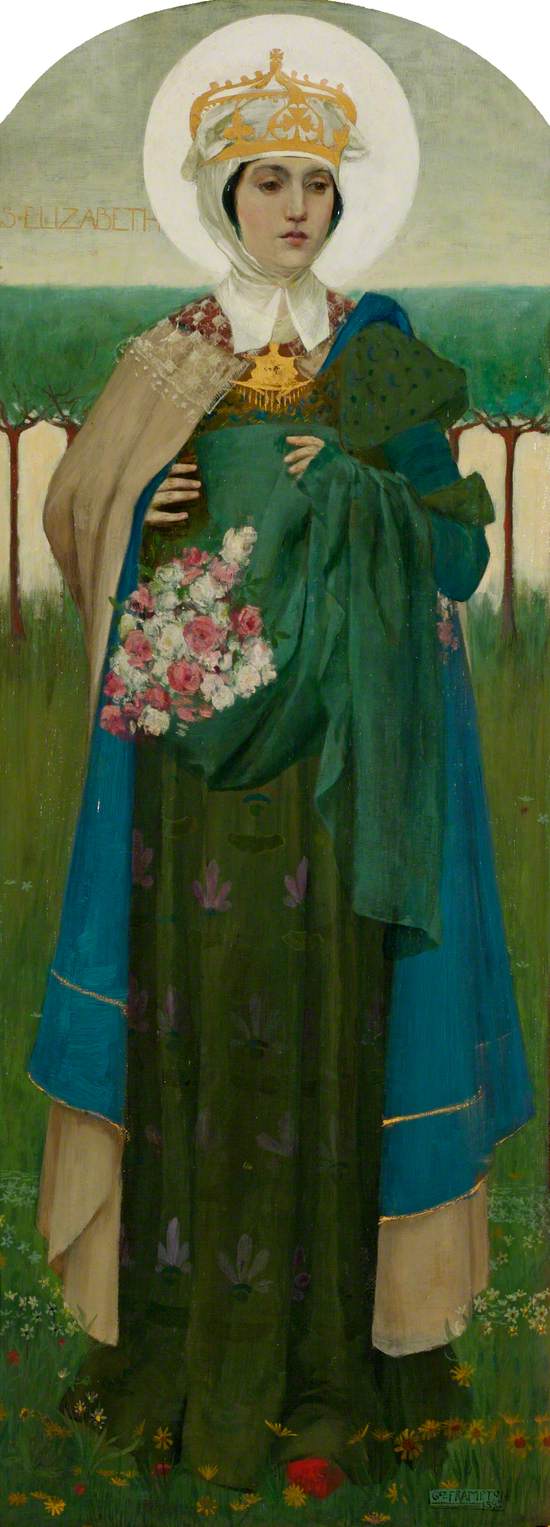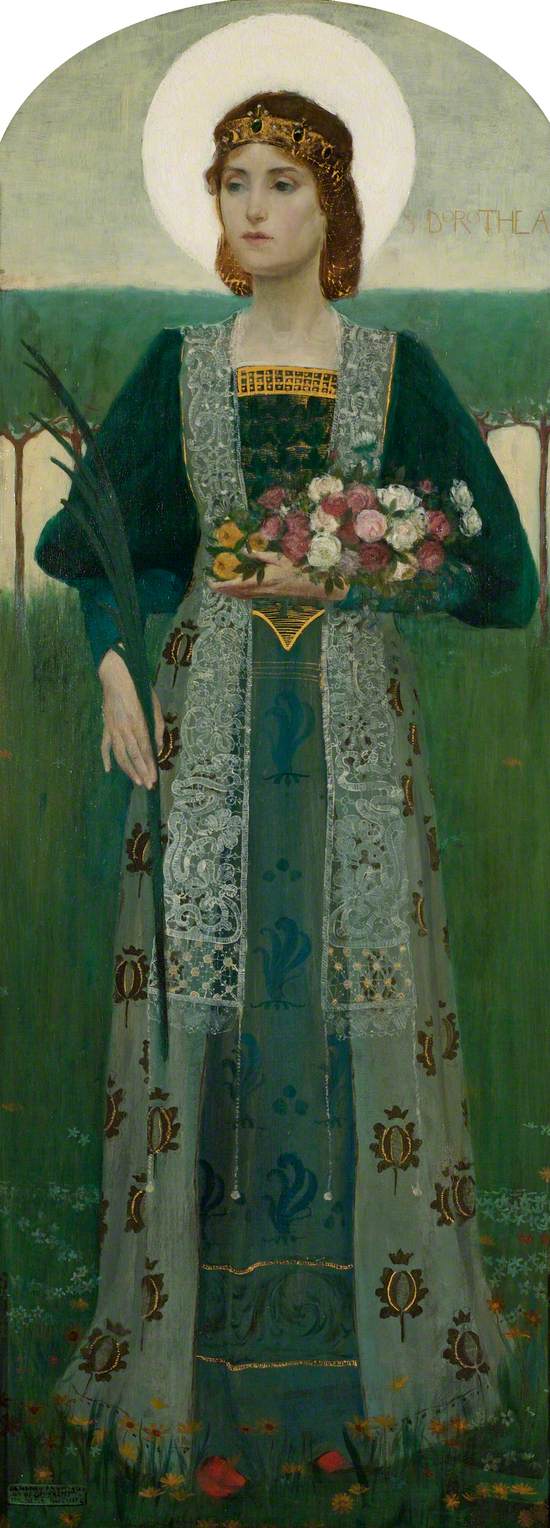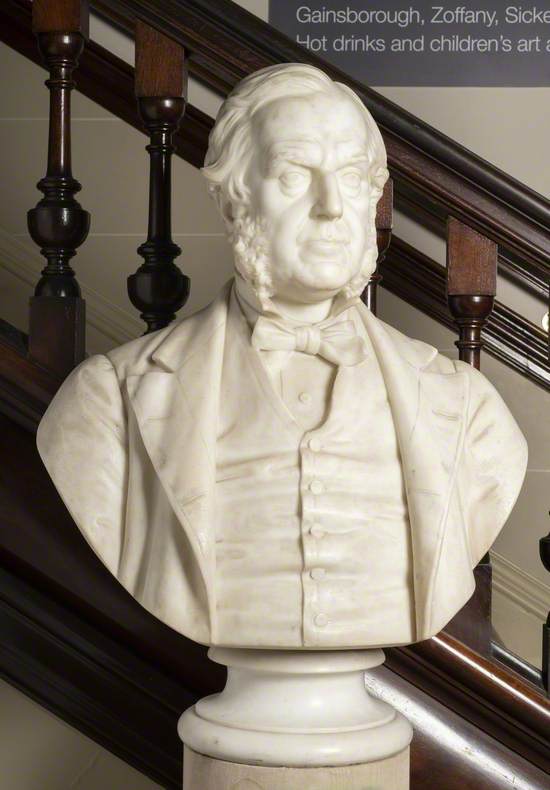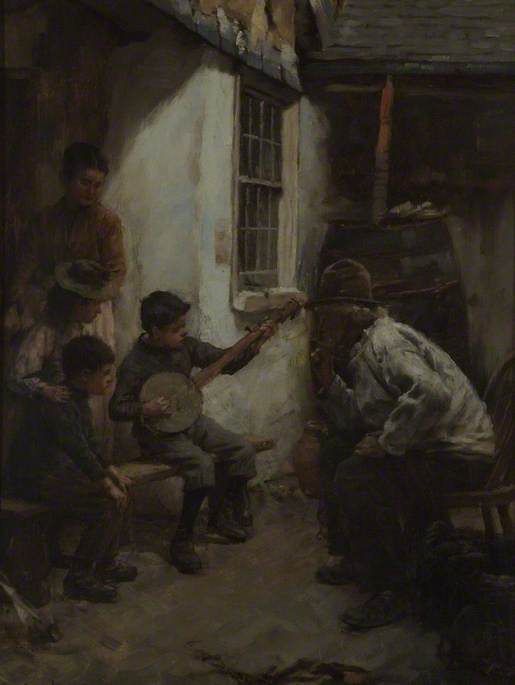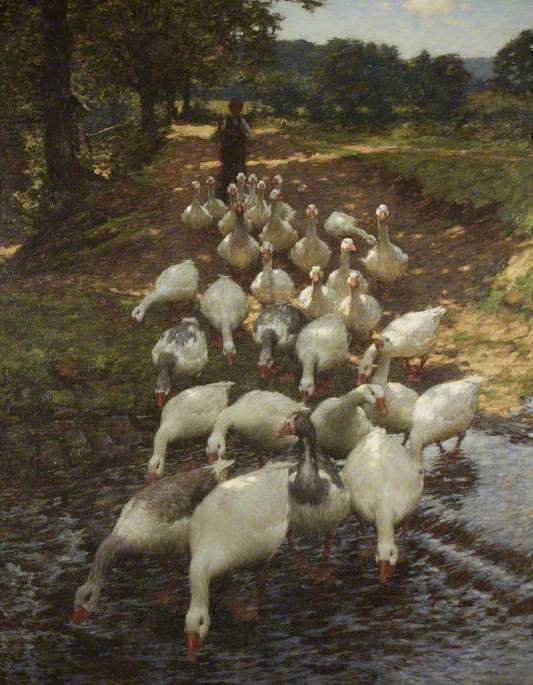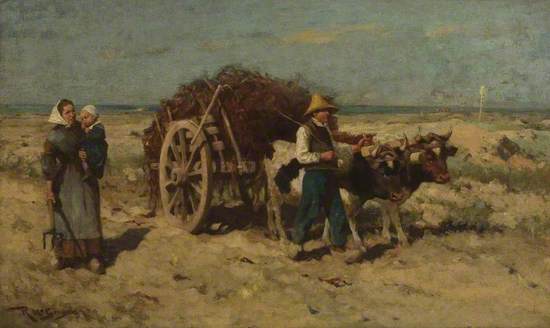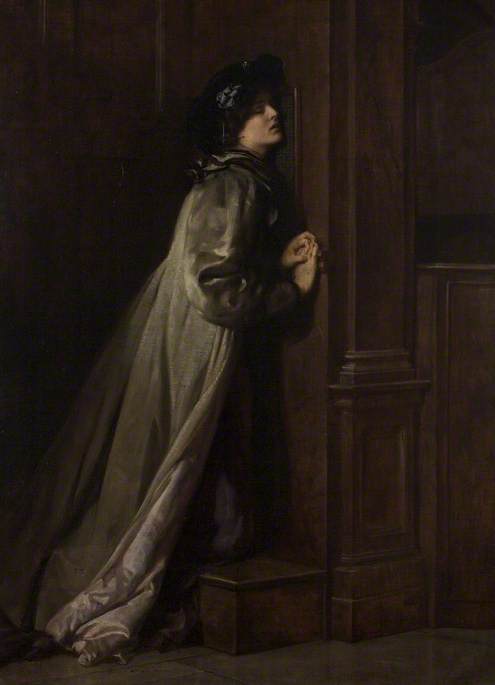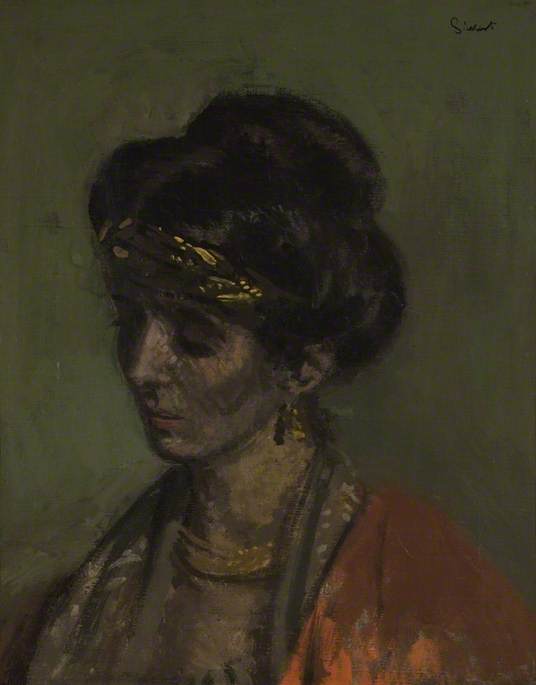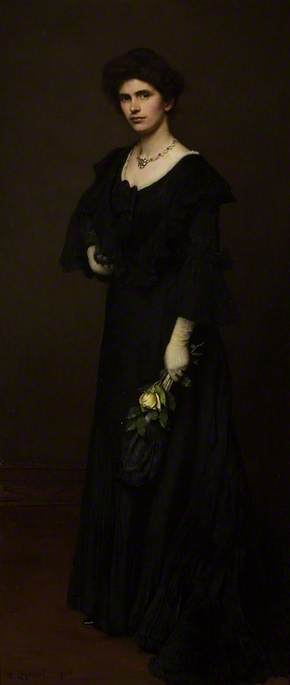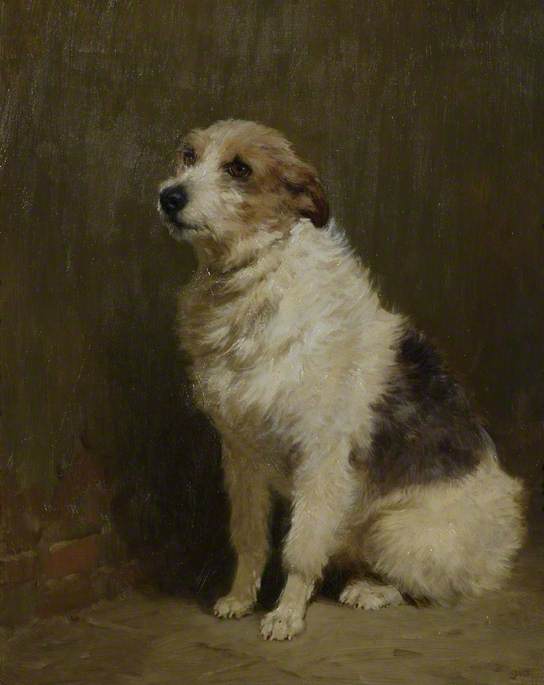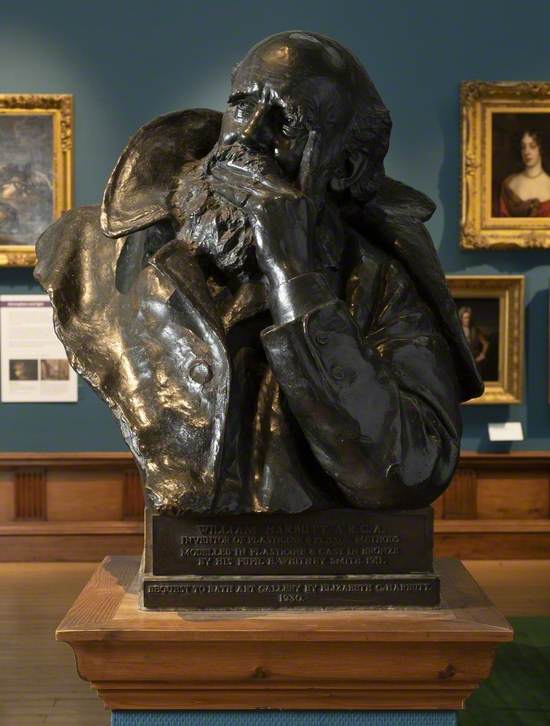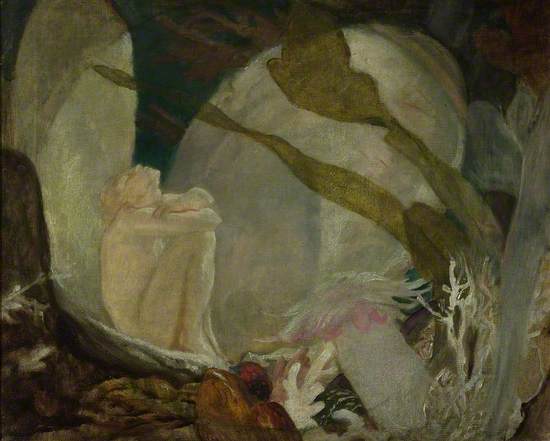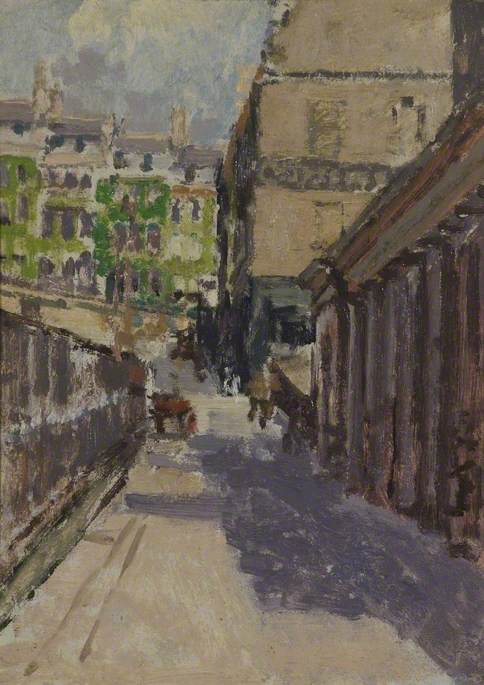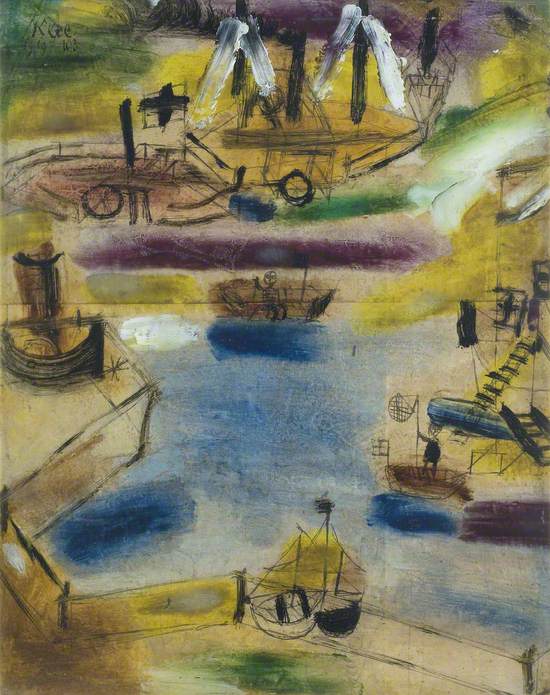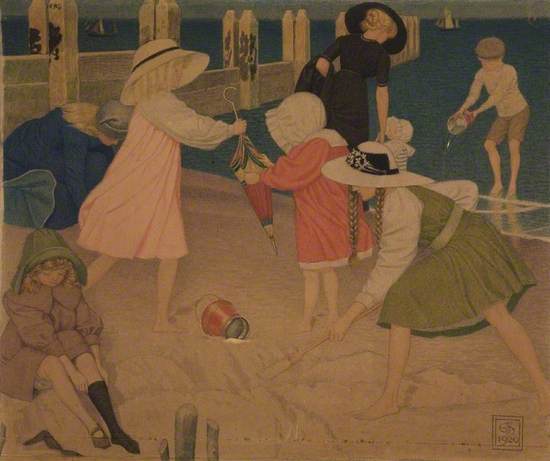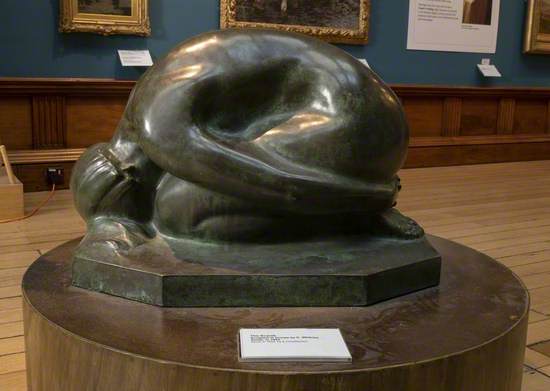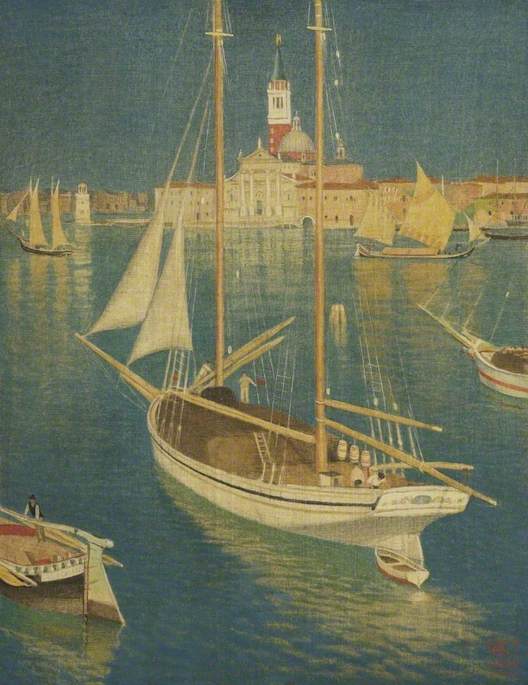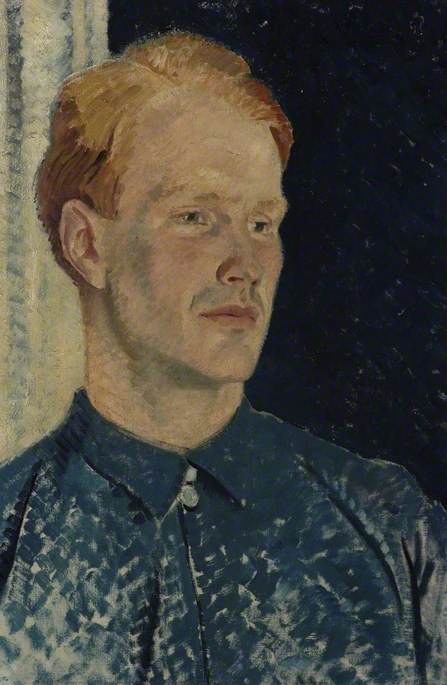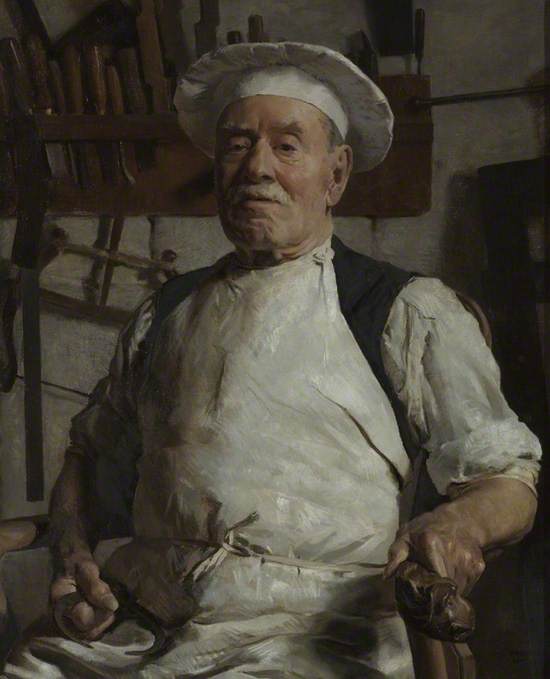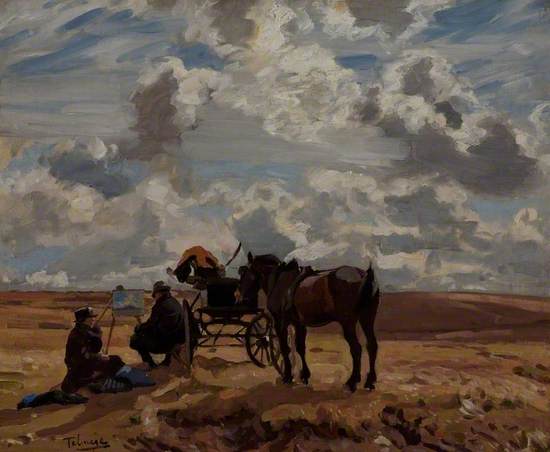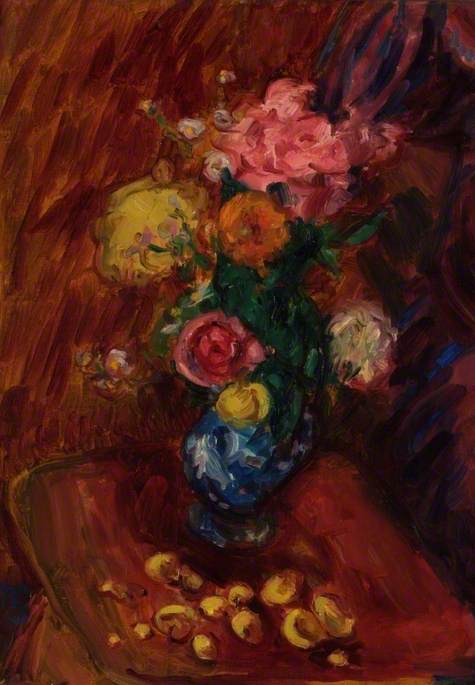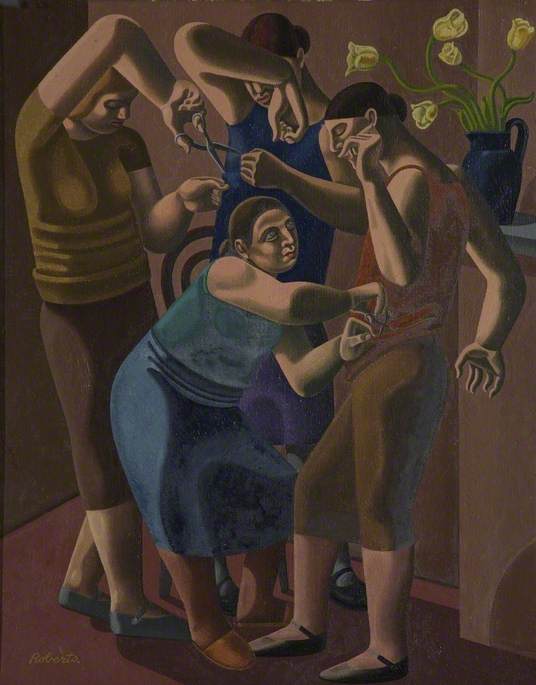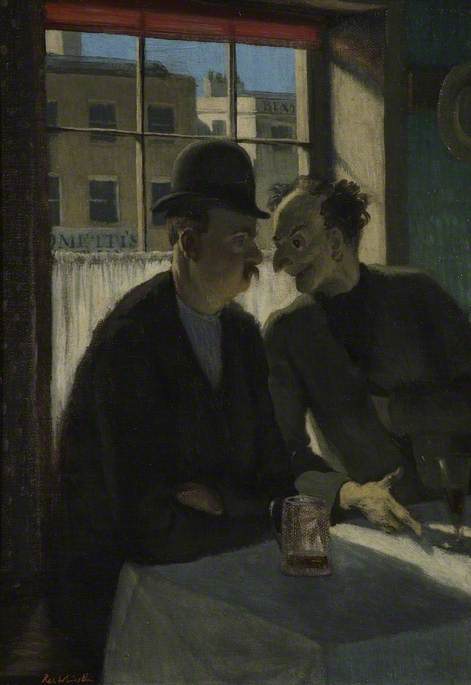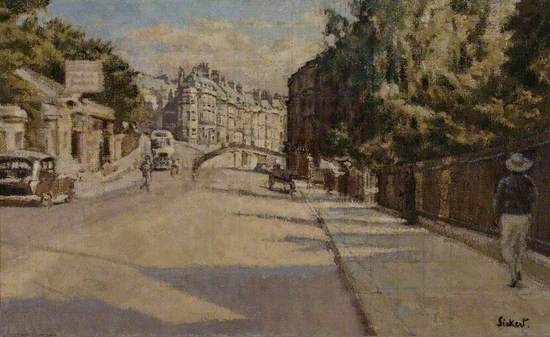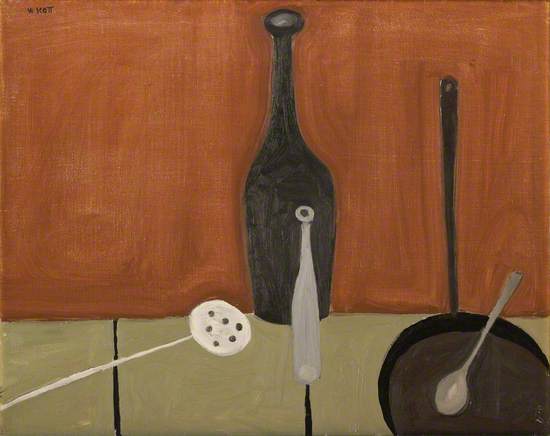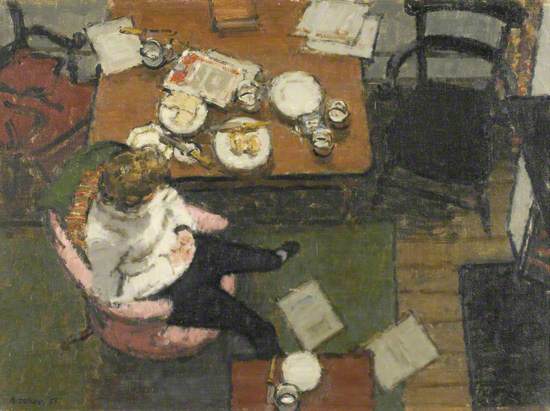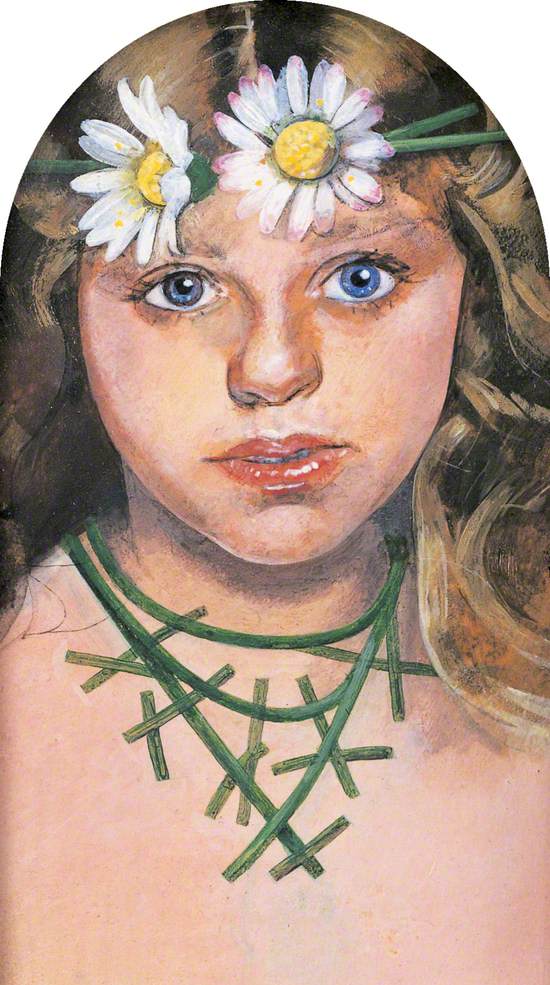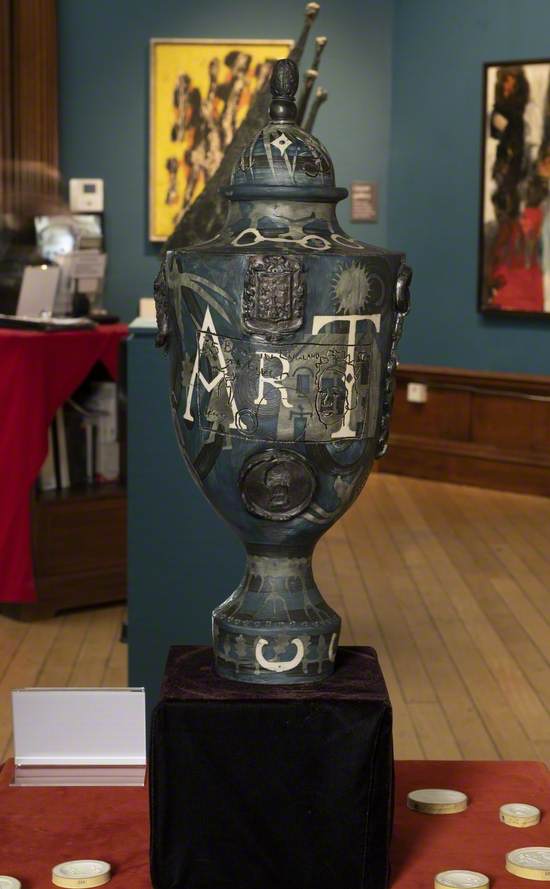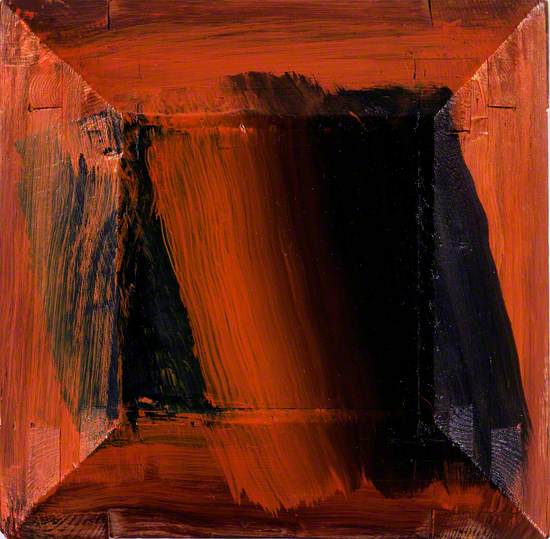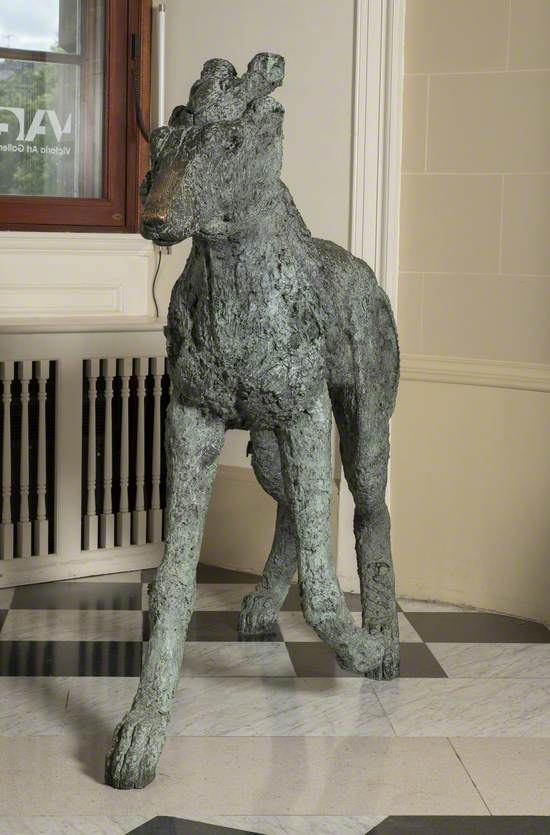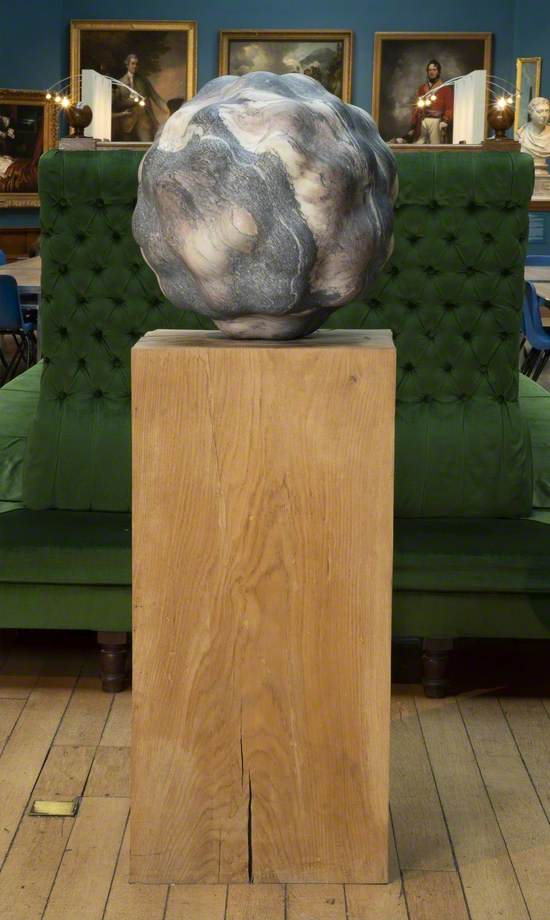The Victoria Art Gallery is the public art museum in Bath. It is run by Bath & North East Somerset Council and houses its collection of paintings, sculpture and decorative arts.
The collection includes many works by artists who have lived and worked in the area, such as Thomas Gainsborough and Walter Sickert. In the 18th century Bath was an important centre for portrait painting, in the 20th century it again became famous with the innovative works produced by artists working at Bath Academy of Art.
The Upper Gallery houses a permanent display of the best works from the collection. The Gallery is currently closed to the public, but all of the works on our walls can be viewed here in this virtual display.
.
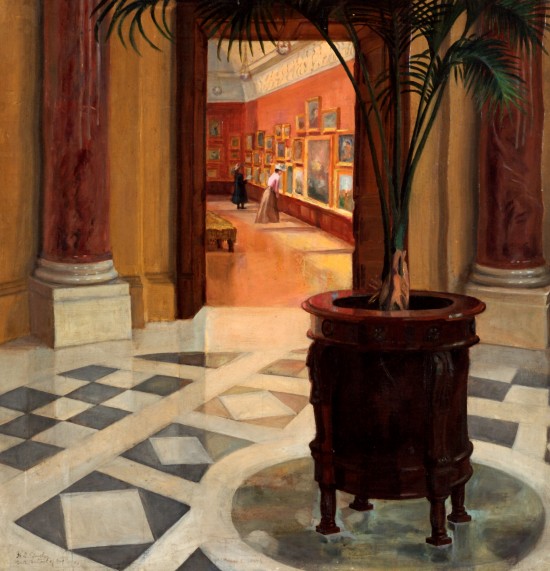
The Interior of the Victoria Art Gallery, 1903
Hester Quinton Eversley (1877-1965)
Art before the Georgians
The works of art in our collection span seven centuries, from the late 15th century to the present day. This display shows how art has changed. Beliefs, attitudes, fashions and tastes have shaped the development of art. Different techniques and the availability of materials have had equal impact.
Religious paintings are among the oldest in our collection. In Catholic churches, paintings of biblical subjects were used to educate and inspire congregations. When services were in Latin and few people could read, art was a vital medium for Christianity.
Before the 18th century, portraiture was for the wealthiest and most influential people. Portraits could impress the viewer with the wealth and power of the sitter.
Art before the Georgians
The subject is from St Matthew’s Gospel and shows the Magi, or three Wise Men, offering gifts of gold, incense, and perfumed ointment to the newborn Christ child.
This is the oldest painting in the Gallery’s collection and was long thought to be by the Flemish painter, Hugo van der Goes (1420-1482). He was a central figure in the Renaissance in northern Europe, which differed from the southern version in its precise attention to detail and truth to nature.
One of van der Goes’ achievements was to pioneer a variant of the Magi subject with half-length figures, thereby allowing a greater intimacy. The current thinking, however, is that the picture was painted by an unidentified follower of van der Goes.
Hugo van der Goes (c.1440–1482) (circle of)
Oil on board
H 43.3 x W 72.3 cm
Victoria Art Gallery
Art before the Georgians
This painting was conserved in 2017 to fix two minor splits which had developed. Infrared photos were taken that showed the underdrawings and dendrochronology was used to date the painting, to 1527-1557.
This portrait is based on a fresco that Holbein painted in Whitehall Palace in 1537. It depicted the first two generations of the Tudor dynasty and was intended to celebrate and bolster the significance of this royal family. The palace was destroyed by fire in 1698 and the fresco with it.
In the 16th century paintings were made by copying the figures from the fresco. Henry VIII was not a patient man. He would have been unwilling to sit for portraits regularly. Royal portraits were popular gifts to favoured courtiers or foreign diplomats.
Hans Holbein the younger (c.1497–1543) (after)
Oil on board
H 90.5 x W 73 cm
Victoria Art Gallery
Art before the Georgians
In 1547 the Venetian artist Titian painted Ecce Homo for Emperor Charles V. It was so well received that several copies were produced by the artist's studio, of which this is one.
In the Bible, the words 'Ecce Homo' (translated as 'behold the man') are used by Pontius Pilate when he presents Jesus, who has been whipped and crowned with thorns, to a hostile crowd before the crucifixion.
Art before the Georgians
This picture has been at the Gallery ever since it opened and has always had the same title.
The Medici were the rulers of Florence. Several of them were called Cosimo. The problem is that the important-looking people shown here are not wearing or carrying anything which identifies them as members of the Medici family.
This picture shows well-known landmarks such as the Doge’s Palace and St Mark’s, but it also includes imaginary buildings. Perhaps the artist enjoyed using his imagination, or perhaps he never visited Venice and instead copied other artists’ engravings of the city.
Louis de Caullery (before 1582–after 1621)
Oil on copper
H 48.5 x W 67.3 cm
Victoria Art Gallery
Art before the Georgians
Jan Brueghel the elder (1568–1625) (circle of)
Oil on copper
H 19.3 x W 24.7 cm
Victoria Art Gallery
Art before the Georgians
Peeter Neeffs was born and died in Antwerp. He was one of a number of Netherlandish painters of the 17th century who specialised in paintings of buildings, especially church interiors.
Neeffs entered the Antwerp Guild of painters in 1609 and must have been very poor, for he was in debt to the Guild at the age of 35. He often worked in partnership with other artists, adding architectural elements to their pictures. His son, Peeter the Younger, studied under him and imitated his style so closely that it can be difficult to tell their work apart.
Peeter Neeffs the elder (c.1578–1656/1661)
Oil on panel
H 28.7 x W 23.6 cm
Victoria Art Gallery
Art before the Georgians
This painting and its pair, Vespers, were clearly designed to contrast the effects of daylight and artificial light. They appear to depict the same church, although the tiles are laid diagonally in one picture, and from left to right in the other. The identity of the church is not known, although the presence of statuary would be consistent with a church in Catholic Flanders. The churches in neighbouring Holland were stripped of their statuary following the nation’s conversion to Protestantism in the 16th century.
Peeter Neeffs the elder (c.1578–1656/1661)
Oil on panel
H 28.3 x W 23.4 cm
Victoria Art Gallery
Art before the Georgians
The festival atmosphere of a cattle market is captured in this scene, amidst the ruined monuments of ancient Rome. This area was the Roman Forum, but in later centuries the wide space was perfect for the buying and selling of cattle.
Adriaen de Bie (1593–1668)
Oil on canvas
H 122.2 x W 202.8 cm
Victoria Art Gallery
Art before the Georgians
Very little is known about the Flemish painter Izaack van Oosten. He specialised in painting small landscapes with animals, somewhat in the style of his better known contemporary, Jan Brueghel. Many 17th-century painters in Flanders and Holland worked to a small scale as it suited the intimate domestic interiors of their patrons. Small dimensions also made their pictures more affordable.
Izaack van Oosten (1613–1661) (attributed to)
Oil on board
H 29.1 x W 41 cm
Victoria Art Gallery
Art before the Georgians
Art before the Georgians
This painting is full of drama. The cat is preparing to pounce. The potential victims are in varying degrees of awareness; the rabbits are oblivious, the cockerel nervous and other birds are preparing for flight.
Finely painted textures and dramatic lighting heighten the realism and tension.
The Antwerp-born artist David de Coninck spent most of his working life in Rome. He was successful still life and animal painter, rabbits being his favoured subject. Today only about one tenth of his paintings are signed by him. In some cases his signature may have been deliberately erased in order to pass his paintings off as the work of other artists.
David de Coninck (1636–1699)
Oil on canvas
H 46.9 x W 53.3 cm
Victoria Art Gallery
Art before the Georgians
In 1687 James II brought his wife, Mary of Modena, to Bath. He hoped that bathing in the thermal waters would cure her infertility and allow her to produce an heir to the throne.
Controversially, the couple were Catholic at a time when religion was a highly charged political issue. Nine months after the visit a son was born. The Catholic heir appalled Britain's Protestant establishment and was in part responsible for the 'Glorious Revolution' of 1688. James II was deposed and exiled to France, his Protestant daughter Mary took to the throne.
This painting is a reminder of Bath's role in the political intrigues of the day.
Willem Wissing (1656–1687) (attributed to)
Oil on canvas
H 58.5 x W 47.5 cm
Victoria Art Gallery
Art before the Georgians
This Cleopatra looks nothing like an ancient Egyptian. People in the 17th century knew little about the ancient world. Instead, they would known her as the heroine of Shakespeare's play Antony and Cleopatra. This would have been commonly performed in the 1680s. Benedetto Gennari painted this tragic heroine more than once. This was produced for a wealthy politician, Francis Gwynne, and Gennari had painted a previous version for Charles II.
Benedetto Gennari the younger (1633–1715)
Oil on canvas
H 129.5 x W 101.2 cm
Victoria Art Gallery
Art before the Georgians
Now known as the Royal Palace, Amsterdam’s town hall, shown on the left of the painting, was built in the late 17th century. Its predecessor had burned down, and the new building, with its classical details and grand scale, was a source of great pride in the city. Dam Square, in front of the Stadhuis, has always been Amsterdam’s hub, a place for people to meet and business to be done.
Isaak van Nickele (1632/1633–1703) (attributed to)
Oil on canvas
H 112.5 x W 163 cm
Victoria Art Gallery
Art before the Georgians
Godfried Schalcken (1643–1706) (attributed to)
Oil on panel
H 43.3 x W 31.3 cm
Victoria Art Gallery
Art before the Georgians
Pieter van der Werff was a Dutch painter. For many years he was in the shadow of his elder brother Adriaan. In his lifetime, Adriaan van der Werff was the most successful and highly paid Dutch artist, working for kings and princes. For many years, Pieter simply made copies of his brother’s paintings, but in later life he established himself as a painter in his own right.
Pieter van der Werff (1665–1722)
Oil on canvas
H 47.5 x W 39.5 cm
Victoria Art Gallery
Art before the Georgians
For many years it was believed that this portrait and the one above were of the Duke and Duchess of Marlborough. It now seems that this is not the case, and unfortunately we do not know who this couple are. The sumptuous lace, silk, and velvet that they wear clearly mark them out as very wealthy people.
Pieter van der Werff (1665–1722)
Oil on canvas
H 46.7 x W 40.6 cm
Victoria Art Gallery
Georgian and Regency Art
During the 18th century, the market for art grew and changed. This was a period of great prosperity. The wealthy had money to travel abroad, where they bought pictures as mementoes of their ‘Grand Tours’. Paintings were not just beautiful things, but also a way to demonstrate wealth, knowledge and good taste.
In Bath, sitting for a portrait became an essential activity for the tourists who came for the spa cure and recreation. Artists who could capture a likeness were almost guaranteed a good income. The most talented and successful artists, such as Thomas Gainsborough, commanded great respect and were able to charge high prices for their work.
Georgian and Regency Art
Cloudesley Shovell joined the navy aged 14 and spent most of his life at sea. Despite many successes, he is remembered mainly for an incident which involved the wrecking of several ships off the Scilly Isles, and led to his own death.
Francis Bird (1667–1731)
Marble
H 73 x W 55 x D 35 cm
Victoria Art Gallery
Georgian and Regency Art
Images of Bath before the Georgian expansions are rare. This picture was painted at around the same time that John Wood was beginning work on Queen Square, the first phase of his building plan for the city. Buildings like Ladymead House were about to become a rarity in fashionable, modern Bath. The house in the painting dates from around the 1680’s.
The painting was discovered in the attic of Ladymead House itself. In 1977, an architect unearthed the painting while conducting a survey of the buildings of Walcot Street. He realised that the building in the painting appeared to match the layout of the earliest parts of the house.
British School
Oil on canvas
H 68.2 x W 98.1 cm
Victoria Art Gallery
Georgian and Regency Art
John Gay (1685-1732) was a poet and dramatist, best remembered for The Beggar's Opera, his famous ballad opera.
Charles Jervas (c.1675–1739) (attributed to)
Oil on canvas
H 75 x W 62 cm
Victoria Art Gallery
Georgian and Regency Art
We are not sure who painted this picture, but it is thought to be by Samuel Scott. Scott painted views of London, particularly scenes of the River Thames.
Scott started his career painting Dutch-style maritime paintings, but he later adopted the style of the famous Venetian painter, Canaletto. Canaletto came to London in 1746. His views of the Thames at London and Windsor sold very well to wealthy art collectors. This success prompted Scott, and others, to imitate him.
Samuel Scott (c.1702–1772) (attributed to)
Oil on canvas
H 59.4 x W 99.6 cm
Victoria Art Gallery
Georgian and Regency Art
Alexander Pope was the foremost poet of the 18th century, best known for his satires.
Prince Hoare the elder (1711–1769)
Marble
H 35 x W 16.6 x D 14 cm
Victoria Art Gallery
Georgian and Regency Art
Thomas Gainsborough was the fifth son of a Suffolk cloth merchant. His decision to move his portrait studio to Bath in 1759 coincided with the city's fashionable heyday. He lived first in a spacious Georgian property in Abbey Street, later moving to 17 Circus. In such august surroundings, he could entertain clients with witty conversation, whilst applying equal dash to his handling of paint.
Thomas Rumbold and his son, William, sat for Gainsborough at 17 Circus in the early 1770s. Gainsborough probably painted their heads from life and roughed in the costume, leaving finer details to be added later. He did not like painting hands and got away with including just one on this occasion.
Thomas Gainsborough (1727–1788)
Oil on canvas
H 234 x W 153 cm
Victoria Art Gallery
Georgian and Regency Art
James Barry (1741–1806)
Oil on canvas
H 76.2 x W 63.5 cm
Victoria Art Gallery
Georgian and Regency Art
William Dawson was Master of Ceremonies at the Upper Assembly Rooms from 1777 to 1785. Here we see him wearing his badge of office. The badge has Britannia on the front, and a date 30 October 1777 on the reverse. Dawson’s badge is now part of the local history collection at the Roman Baths Museum.
The job of the Master of Ceremonies was partly to maintain strict standards of etiquette and dress. In 1785, concerned about declining standards, Dawson placed a notice in the Bath press reminding visitors that the wearing of hats in the Rooms was only allowed on ball or concert nights.
Thomas Hickey (1741–1824) (after)
Oil on canvas
H 84 x W 72 cm
Victoria Art Gallery
Georgian and Regency Art
This is a picture of a French girl, aged about 12, painted by a German artist, both living in London.
Sophia’s father, Charles (below), brought her to England aged two or three. He was a dentist who worked for the royal family. She never married and kept house for her father when she grew up. She loved entertaining, giving dinner parties, and private concerts.
Johann Zoffany also worked for the royal family. He was particularly skilled in painting children and made charming, informal portraits of the royal princes. In Sophia’s portrait, with typical attention to detail, he included her cat, her fashionable headdress, and her bitten fingernails.
Johann Zoffany (1733–1810)
Oil on panel
H 76 x W 61.5 cm
Victoria Art Gallery
Georgian and Regency Art
Johann Zoffany (1733–1810)
Oil on canvas
H 76 x W 64 cm
Victoria Art Gallery
Georgian and Regency Art
Joseph Farington (1747–1821) (attributed to)
Oil on canvas
H 154 x W 214 cm
Victoria Art Gallery
Georgian and Regency Art
Roger Kemble was a theatre manager and actor. He set up a successful touring theatre company, the 'Warwickshire Company of Comedians'.
His significance is not so much down to his own career, but the theatrical dynasty he founded. He and his actress wife, Sally Ward, had twelve children, five of which grew up to have a career on stage. The most celebrated was Sarah Siddons. As a young woman she appeared on the stage in Bath many times, before moving on to London's more prestigious theatres. Siddons specialised in tragic roles, most famously as Lady Macbeth.
Thomas Beach (1738–1806) (attributed to)
Oil on canvas
H 20.4 x W 17.4 cm
Victoria Art Gallery
Georgian and Regency Art
Richard Brent was a pedlar who worked the Bristol and Bath area. He was nicknamed Tom Thumb because he sold chapbooks: miniature story books for children priced at one or two pennies. He also hawked newspapers, garters, lace and other knick-knacks.
Brent had an exciting private life. He married four times, had 32 children and died in Bristol, blind and deaf, aged about 110.
Thomas Barker painted old ‘Tom Thumb’ at least three times. Bath ladies and gentlemen were so enthusiastic about this portrait that they raised money to give the pedlar a weekly income in his old age.
Thomas Barker (1769–1847)
Oil on canvas
H 61 x W 43.2 cm
Victoria Art Gallery
Georgian and Regency Art
Thomas Barker came from a local family of artists. He is age 22 in this portrait and at the height of his success.
Looking over his shoulder is Charles Spackman, a local coach builder and property developer. Spackman had recognised Barker’s talent early and financed the boy’s training. He had him educated and sent him to Rome.
Barker became very skilled at imitating other artists’ styles. The picture on the easel here looks just like a landscape by Gainsborough.
After a few years in London, he returned here and became an established and rather conservative Bath artist. Although his early portraits, like this one, are striking, his later work showed less originality and more sentimentality.
Thomas Barker (1769–1847)
Oil on canvas
H 122.9 x W 152.4 cm
Victoria Art Gallery
Georgian and Regency Art
Philip de Loutherbourg was born in Strasbourg, the son of a miniature painter. He trained in France, but worked in England from 1771 onwards. His artistic career was successful, and he exhibited frequently at the Royal Academy. In 1789 he gave up painting temporarily in order to concentrate on his other main interests – alchemy and the supernatural.
In his 30s, Loutherbourg designed stage sets in London. Although he later established his reputation as an artist, this painting, with its rugged, dramatic style, looks rather like theatrical scenery. Rather than being an accurate depiction of an actual place or event, this painting is the product of the artist’s imagination.
Philip James de Loutherbourg (1740–1812)
Oil on canvas
H 114.5 x W 165 cm
Victoria Art Gallery
Georgian and Regency Art
Antonio Canova (1757–1822) (copy after)
Marble
H 163 x W 69 x D 78 cm
Victoria Art Gallery
Georgian and Regency Art
This idealised bust of George III is classical in style. The king is shown looking strong and calm. There has been much debate about George III's reputation, both during his long reign and since his death. His legacy is often linked to his illness and lack of control. Although this bust dates from a period of the king's 'madness' Turnerelli's depiction far more sympathetic, in line with the popular image of the conscientious, dutiful monarch.
Peter Turnerelli was born in Ireland into an Italian family. Turning his back on his training for the priesthood, he followed in his father's footsteps and chose to become a sculptor. He trained in London and visited Rome, where he was influenced by the neoclassical style of Antonio Canova.
Peter Turnerelli (1774–1839)
Marble
H 92 x W 56 x D 36 cm
Victoria Art Gallery
Georgian and Regency Art
William Cockburn joined the army in 1778. He served in America, India and Ireland. On returning from India, he came to live in Bath. Cockburn had a keen interest in painting. He was an amateur artist and a friend of Thomas Barker, who painted this portrait.
Cockburn was a supporter of local charities. After his death a statement appeared in the Bath Chronicle: “his memory will be embalmed by the tears of the needy, the destitute and the sick poor of the city, whose sorrows were soothed by his personal consolations and wants relieved by this large beneficence.”
Thomas Barker (1769–1847)
Oil on canvas
H 239 x W 147.3 cm
Victoria Art Gallery
Georgian and Regency Art
Sebastian Pether specialised in painting nighttime scenes. This one is very typical of his work. His best paintings always feature a bright moon, reflections on water and rustic figures.
He imitated the artistic style of his father, Abraham, who was known as "Moonlight Pether". This rather formulaic approach proved successful for both father and son.
This painting might be of Southampton, some of the architectural details in this work are reminiscent of buildings in the early 19th century city.
Sebastian Pether (1790–1844)
Oil on canvas
H 61.7 x W 88.3 cm
Victoria Art Gallery
Georgian and Regency Art
Georgian and Regency Art
John Arthur Roebuck was a Member of Parliament for Bath from 1832 to 1847. He was a political radical and campaigned for all men to be given the vote. When he was first elected, there were only thirty voters in Bath.
Roebuck was known as a rabble-rouser with strong views, always ready to enter an argument about political reform. The painting gives no clue as to his personality or political beliefs, as he appears every inch the gentleman; full of poise and restraint.
James Green (1771–1834)
Oil on canvas
H 77 x W 63.5 cm
Victoria Art Gallery
Victorian and Edwardian Art
This was a period of great change in Britain. Increasing industrialisation and imperial expansion meant that the rich got richer. A new middle class, with money to spend on art, emerged. For a certain type of person, having the right kind of objects in the home became not only more desirable, but also more affordable.
During this period British painting became more diverse. Wealthy people no longer just bought portraits that they had commissioned. They were now more likely to buy pictures of all sorts of subjects, views of beautiful countryside and maritime scenes sold well. Paintings that told a story became very popular. In an intensely religious society, pictures that looked at moral issues had broad appeal.
Victorian and Edwardian Art
Thomas Jones Barker came from a local family of artists. There are pictures by his father and brothers in the collection. Unlike the rest of his family, he did not stay in Bath but had a successful career working in London and Paris.
This painting was for the daughter of King Louis Philippe of France. It is Barker’s most famous painting, and he won prizes and medals for it in France.
The picture tells a sad story. It is inspired by a ballad about the death of a young woman on the day before her wedding. Many of the objects in the picture have been chosen for their symbolic meanings. The hourglass beside the bed shows the passing of time and the shortness of life. The violets in her hand mean sadness and her pearls indicate purity.
Thomas Jones Barker (1815–1882)
Oil on canvas
H 124.5 x W 167.1 cm
Victoria Art Gallery
Victorian and Edwardian Art
John Syer spent most of his life in Bristol and painted views of the West Country.
The newly built Great Western Railway is featured in this very detailed work. The railway line was intended to link Bristol with London, bolstering Bristol's status as a business centre and major port. A marvel of Victorian engineering, the railway boasted three viaducts, four major bridges and seven tunnels in the stretch between Bath and Bristol alone.
In this view we can just see the original Bath Spa station, built in 1840, with a roof over the tracks.
Victorian and Edwardian Art
David Cox the elder (1783–1859)
Oil on board
H 28 x W 36.7 cm
Victoria Art Gallery
Victorian and Edwardian Art
William Duffield was born in Bath, the son of a stationer and bookseller with a shop on Milsom Street. He specialised in still life painting – flowers, fruit, and occasionally dead birds and animals.
It is said that his death, at the age of only 47, resulted from an infection he contracted from a dead stag he was painting. Because Duffield had lost his sense of smell, he was unable to detect the dead animal’s dangerous state.
William Duffield (1816–1863)
Oil on canvas
H 28.1 x W 33.3 cm
Victoria Art Gallery
Victorian and Edwardian Art
John Warrington Wood (1839–1886)
Marble
H 167 x W 47 x D 58 cm
Victoria Art Gallery
Victorian and Edwardian Art
Calvert Richard Jones (1804–1877)
Oil on canvas
H 99.1 x W 147.3 cm
Victoria Art Gallery
Victorian and Edwardian Art
Calvert Richard Jones (1804–1877)
Oil on canvas
H 92.5 x W 138 cm
Victoria Art Gallery
Victorian and Edwardian Art
John Callcott Horsley (1817–1903)
Oil on canvas
H 74.3 x W 71.7 cm
Victoria Art Gallery
Victorian and Edwardian Art
John Robert Dicksee (1817–1905)
Oil on canvas
H 32.5 x W 23 cm
Victoria Art Gallery
Victorian and Edwardian Art
Victorian and Edwardian Art
Victorian and Edwardian Art
Frederick George Cotman (1850–1920)
Oil on canvas
H 20.3 x W 25 cm
Victoria Art Gallery
Victorian and Edwardian Art
The sitter in this dramatic portrait is Polish artist Anna Bilinska-Bohdanowicz. Artist and sitter probably met in Paris in 1884, where Bilinska was studying on an art course for women.
In this portrait, Bilinska is shown wearing typical mourning dress, with what may be a black feather fan resting on her lap. In 1884, Anna’s father had died leaving her impoverished. A year later her fiancé too died. In deep despair she travelled round France sketching and painting landscapes. After marrying in 1892 she had plans to set up an art school for women in Warsaw but died tragically young of heart disease, so her dream was never realised.
Emmeline Deane (1858–1944)
Oil on canvas
H 128 x W 90.7 cm
Victoria Art Gallery
Victorian and Edwardian Art
Mihály Munkácsy was a leading Hungarian Realist painter who enjoyed international fame in the later nineteenth century after winning a gold medal at the Paris Salon of 1870.
Calvary is the climax to the artist's monumental trilogy on the passion of Christ. Munkácsy’s interpretation of the Crucifixion is particularly dramatic, an effect achieved through employment of light. Tintoretto was an important influence on the trilogy. In the course of working on the Crucifixion, Munkácsy had himself suspended from a crucifix, apparently in order to identify with Christ’s suffering.
Victorian and Edwardian Art
Thomas Sidney Cooper (1803–1902)
Oil on canvas
H 96.6 x W 154.9 cm
Victoria Art Gallery
Victorian and Edwardian Art
This is a charming domestic scene. The subtitle of the painting adds further character: 'They Would Play for Hours and End in a Draw'.
Born in Edinburgh, Robert Gemmell Hutchison worked in an Impressionistic style now recognised as being typical of the Scottish School of this period. He used distinctive broad brushstrokes and soft, muted colours. He particularly favoured scenes of simple domesticity, often featuring children.
Robert Gemmell Hutchison (1855–1936)
Oil on canvas
H 29.3 x W 39.6 cm
Victoria Art Gallery
Victorian and Edwardian Art
This painting illustrates a miracle performed by Jesus in the gospel of St Mark: “And he took the damsel by the hand and said….Damsel I say unto thee, arise”. The artist shows the most dramatic moment just before the girl comes back to life. Her parents and a disciple watch with anticipation as the miracle takes place. The window to the right of the picture lights the scene and gives us a view of the city of Nazareth.
Edwin Long was born at Kelston, near Bath, and worked here as a portrait painter. He moved to London in the 1850s and became a very successful artist, painting Middle Eastern scenes populated with beautiful young women.
Edwin Long (1829–1891)
Oil on canvas
H 135 x W 184 cm
Victoria Art Gallery
Victorian and Edwardian Art
Thomas Sidney Cooper (1803–1902)
Oil on canvas
H 61 x W 91.7 cm
Victoria Art Gallery
Victorian and Edwardian Art
This and the painting below adorn the panels of a screen. The other panels depict a rose tree and an apple tree. St Dorothea is the patron saint of florists. The frieze above the saints is decorated with mother of pearl and ivory, the four rear panels are covered with blue silk brocade.
George Frampton was a leading figure in the Arts and Crafts Movement and a member of the Art Workers' Guild.
George James Frampton (1860–1928)
Oil on panel
H 96.3 x W 35.5 cm
Victoria Art Gallery
Victorian and Edwardian Art
George James Frampton (1860–1928)
Oil on panel
H 96.3 x W 35.5 cm
Victoria Art Gallery
Victorian and Edwardian Art
Albert Bruce-Joy (1842–1924)
Marble
H 88 x W 76 x D 32 cm
Victoria Art Gallery
Victorian and Edwardian Art
Walter Langley was one of a group of artists who settled in the small fishing village of Newlyn in Cornwall. They painted the ordinary people of the village going about their normal lives. Langley said that his interest was in ‘the workers and the toilers’.
Like some contemporary French artists, the Newlyn School of painters worked outdoors to make their pictures look more realistic.
Victorian and Edwardian Art
Henry La Thangue spent three years in France as part of his training. He was fascinated by plein-air (outdoor) painting and spent his summer holidays on sketching trips in Brittany.
La Thangue painted several pictures showing a child or adult driving flocks of geese or ducks. Here the peaceful atmosphere of a summer’s day is conveyed by dappled sunlight. Light is crucial to his painting. A fellow artist remarked ‘that it was the beauty of things in sunlight that excited him’.
Henry Herbert La Thangue (1859–1929)
Oil on canvas
H 116.8 x W 94 cm
Victoria Art Gallery
Victorian and Edwardian Art
Robert McGregor (1847–1922)
Oil on canvas
H 67 x W 106.7 cm
Victoria Art Gallery
Victorian and Edwardian Art
Gaston Linden (1861–1940)
Oil on canvas
H 114.6 x W 87.9 cm
Victoria Art Gallery
Victorian and Edwardian Art
Victorian and Edwardian Art
Celia Brunel was the granddaughter of Isambard Kingdom Brunel, the famous engineer who built the Clifton Suspension Bridge and the SS Great Britain.
Walter Sickert despised professional portrait painters, describing them as ‘the wriggle-and-chiffon school’. He nevertheless produced powerful portraits throughout his life. Here he has used thick paint and lively brushstrokes to capture his elegant sitter’s features in a moment of thought.
Walter Richard Sickert (1860–1942)
Oil on canvas
H 50.8 x W 40.6 cm
Victoria Art Gallery
Victorian and Edwardian Art
William Logsdail (1859–1944)
Oil on canvas
H 200.7 x W 85 cm
Victoria Art Gallery
Victorian and Edwardian Art
Pilu was something of a celebrity. He performed all over the world, apparently answering maths questions by turning up correct figures with his paw. He apparently made a fortune for his owner! He tragically died in Pisa in 1910, the year this was painted, when he was run over and killed by a truck.
Dogs have long been used in art to symbolise unconditional loyalty. They were a favourite subject for Victorian artists, such as John Charlton, who specialised in animal paintings. He was said to be particularly good at painting foxhounds and, above all, at capturing their personalities.
John Charlton (1849–1917)
Oil on canvas
H 38.4 x W 30.5 cm
Victoria Art Gallery
Victorian and Edwardian Art
William Harbutt was born in Newcastle and came to Bath in 1874, to work as headmaster at Bath School of Art. Around 1897, Harbutt invented the modelling material Plasticine. Initially, Harbutt regarded Plasticine as a teaching aid rather than a commercial product. He invented it specifically for his students to use, as the clay then used for modelling was heavy and difficult to use. The Harbutt Plasticine business, based at Bathampton from 1900, was very successful.
Edwin Whitney-Smith (1880–1952)
Bronze
H 73 x W 55 x D 47 cm
Victoria Art Gallery
.

Victorian and Edwardian Art
Frank Brangwyn (1867–1956)
Oil on canvas
H 33 x W 43 cm
Victoria Art Gallery
World War I to the Present Day
World War I changed society, and art too. The celebration of privilege typical of Edwardian art was no longer as welcome. Artists were increasingly drawn to document the changes wrought by wartime and paint everyday subjects.
The early 20th century was a period of exploration and experimentation in British art. Artists were keen to paint not just the mere appearance of things, but to try to go deeper and approach their subjects in new ways. Artists such as Walter Sickert and William Roberts were among the innovators.
The second half of the 20th century saw the advent of the Cold War and the threat posed by nuclear weapons. A new sense of unease was reflected in art. Many painters took their lead from America and worked in abstraction.
World War I to the Present Day
In 1953, Reg Wright, who was then Curator of the Gallery, found this painting underneath Glyn Warren Philpot’s “The Skyscraper”. Presumably, the artist had simply stretched another canvas over the top of this picture, thinking that it was worthless.
The Pearl is a study for a larger painting entitled “Under the Sea”. Reg Wright, not the artist, chose the title “The Pearl” for this picture.
World War I to the Present Day
Walter Sickert trained as an actor before studying art. He painted music halls and seedy lodging house interiors, and enjoyed sophisticated London society. He worked with Degas in Dieppe and for several years divided his time between Dieppe and Venice. The artist also has strong Bath connections. He spent some time here during the First World War and later settled in Bathampton for the last four years of his life.
Walter Richard Sickert (1860–1942)
Oil on panel
H 29.6 x W 21.8 cm
Victoria Art Gallery
World War I to the Present Day
This tiny jewel-like painting tells an extraordinary story. It was painted by the Swiss Expressionist Paul Klee. He painted it mid-career when he was on the cusp of international stardom. Materials were scarce so Klee recycled part of an older portrait as a backing to the painting.
When German hyper-inflation forced its first owner to sell up, the painting was acquired by a Jewish family, the Habers. They fled Germany and, as it was so small, took the picture with them. It was the son of the family, Lutz Haber, who eventually ended up in Bath. He treasured the painting his whole life and bequeathed it to the Gallery.
World War I to the Present Day
Joseph Southall worked with, and promoted, a revival in the use of tempera paint. Children at Play is painted in this egg-based medium. It is difficult to work with as, unlike oil paint, you cannot paint over it. However, when successfully mastered the colours and effects achieved are beautiful.
Joseph Edward Southall (1861–1944)
Tempera on board
H 33 x W 39 cm
Victoria Art Gallery
World War I to the Present Day
Edwin Whitney-Smith was born in Bath and studied at Bath and Bristol Schools of Art. He trained under William Harbutt, the inventor of Plasticine. Whitney-Smith spent most of his working life in London, and exhibited at the Royal Academy and Paris Salon, specialising in portrait sculptures in bronze and marble.
A scarab is a type of ancient Egyptian amulet or charm. One side would be covered with hieroglyphics or charms, the other would be in the shape of a sacred beetle. The shape of this sculpture, the way the figure is crouching, is reminiscent of a scarab amulet.
World War I to the Present Day
Joseph Edward Southall (1861–1944)
Tempera on board
H 34 x W 26.8 cm
Victoria Art Gallery
1927
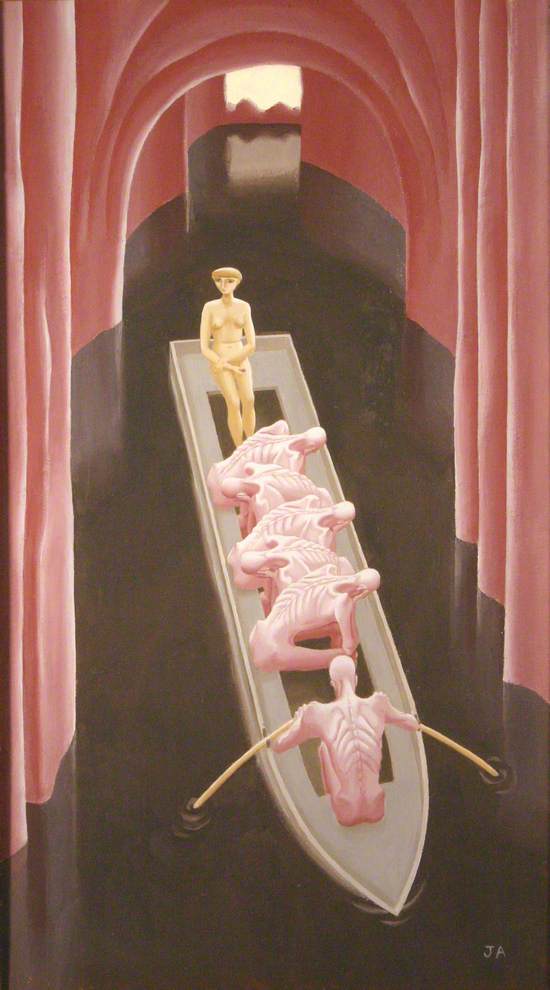
World War I to the Present Day
John Armstrong painted imaginative and classical subjects. His approach to painting was systematic – he normally started in the top left-hand corner and worked across and down, finishing every part as he progressed. In the 1930s, after seeing the work of the Surrealist painter de Chirico, Armstrong’s style became increasingly dreamlike. Armstrong also painted stage sets and murals, including a ceiling painting for Bristol’s council chamber.
John Armstrong (1893–1973)
Tempera on board
H 64 x W 36 cm
Victoria Art Gallery
1927
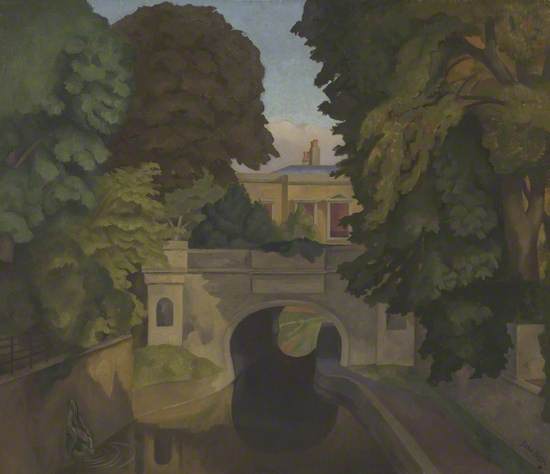
World War I to the Present Day
The bridge crosses the Kennet and Avon Canal in the middle of Sydney Gardens. Having been conceived as a romantic landscape, Sydney Gardens soon experienced the impact of the industrial revolution. They were cut through first by the Kennet and Avon Canal and then the Great Western Railway.
The Canal was built between 1796 and 1810 to allow the transport of goods between the Avon and the Thames. The engineer was John Rennie, and most of the bridges were also designed by him. Nash's picture is one of a series of views of Bath painted after his visit here in 1925. These are among the few urban views he ever painted, for he was inspired primarily by the English landscape.
John Northcote Nash (1893–1977)
Oil on canvas
H 71 x W 76.2 cm
Victoria Art Gallery
World War I to the Present Day
Frank Coombs was born in Radstock. In the 1930s he worked at the Storran Gallery, a commercial art gallery in London. Together with a painter, Eardley Knollys, Coombs organised a remarkable series of exhibitions there, featuring works by Picasso, Modigliani and Utrillo, as well as by leading British artists including Philpot. Coombs was killed during World War Two, aged only 35.
Glyn Warren Philpot (1884–1937)
Oil on canvas
H 55 x W 38 cm
Victoria Art Gallery
World War I to the Present Day
Born in Walcot, Bath, Charles Baker was a skilled cabinetmaker and upholsterer. He specialised in the reproduction of antique furniture. Educated at the ‘penny-a-week’ school on Guinea Lane, he went into the furniture business immediately after leaving school. He set up a company that made 100 chairs for the Banqueting Room in the Guildhall and a cabinet for Queen Victoria’s doll’s house. This picture was painted the year after he retired, aged 88.
Frederick George Swaish (1879–1931)
Oil on canvas
H 74 x W 61.5 cm
Victoria Art Gallery
World War I to the Present Day
Algernon Talmage was particularly interested in painting the elements and specialised in seascapes.
This painting is all about the weather. The sketchers of the title are huddled behind the horse and carriage, determined to paint the scene around them as the wind threatens to blow away their art materials.
Algernon Talmage (1871–1939)
Oil on canvas
H 50.8 x W 60.1 cm
Victoria Art Gallery
World War I to the Present Day
Matthew Smith visited France many times. His painting was inspired by the work of the group of French artists known as the ‘Fauves’ or ‘wild beasts’. They were given this name by a French art critic in 1905 who was struck by their strong colours and a bold style. Our painting is typical of Smith’s work. He produced many colourful and exuberant pictures of vases of flowers.
Matthew Arnold Bracy Smith (1879–1959)
Oil on canvas
H 60 x W 45 cm
Victoria Art Gallery
1931
World War I to the Present Day
William Roberts was a carpenter’s son, born in Hackney, who won a scholarship to the Slade School of Art. In the 1910s he and other London-based artists who declared they were producing new art for a new century. Their semi-abstract pictures were inspired by modern machinery and industry.
The First World War interrupted their work, and Roberts became an Official War Artist. After the War he developed his own style using clear, tubular forms and strong colours. He painted in the same way for the rest of his working life.
William Patrick Roberts (1895–1980)
Oil on canvas
H 50.8 x W 40.6 cm
Victoria Art Gallery
World War I to the Present Day
Reginald John 'Rex' Whistler showed precocious artistic talent as a teenager. He studied first at the Royal Academy but was 'sacked for incompetence'. He then went to the Slade School of art, which he found to be a more congenial environment. Whistler worked in diverse areas of art and design: painting murals, illustrating books and designing theatrical sets, posters and Wedgwood china.
Typical of Whistler's oil paintings, The Foreign Bloke is whimsical and enigmatic. Two intriguing men sit by a window, deep in conversation. Which is the 'foreign bloke' of the title? Perhaps it is the subject of their conversation.
Rex Whistler (1905–1944)
Oil on board
H 35.7 x W 24.7 cm
Victoria Art Gallery
World War I to the Present Day
Walter Sickert is the most important 20th century artist to have worked in Bath. He first came to the city during World War One, at a time when he was forced to give up his normal practice of travelling abroad to work. He loved Bath's Georgian architecture and the way the buildings and streets appeared to stretch effortlessly into the surrounding hills.
This view of London Street was based on a photograph. The grid lines that he used to transfer the image to the canvas are deliberately left faintly visible, he was known to be attracted to their abstract properites.
Walter Richard Sickert (1860–1942)
Oil on canvas
H 48.3 x W 79 cm
Victoria Art Gallery
World War I to the Present Day
William Scott painted this while working as Senior Painting Master at the Bath Academy of Art at Corsham. Scott was well connected and encouraged many progressive young artists from London and St Ives to teach at the Academy. It quickly became a leading art school.
After leaving the army in 1945, Scott returned to painting full time, acquiring an international reputation in the 1950s and 60s. Scott created many still lives featuring homely objects such as pots, pans and vegetables. In Bottle and Fish Slice the simple objects reflect the artist's working class background and emphasise their abstract qualities.
William Scott (1913–1989)
Oil on canvas
H 40.8 x W 50.8 cm
Victoria Art Gallery
1951
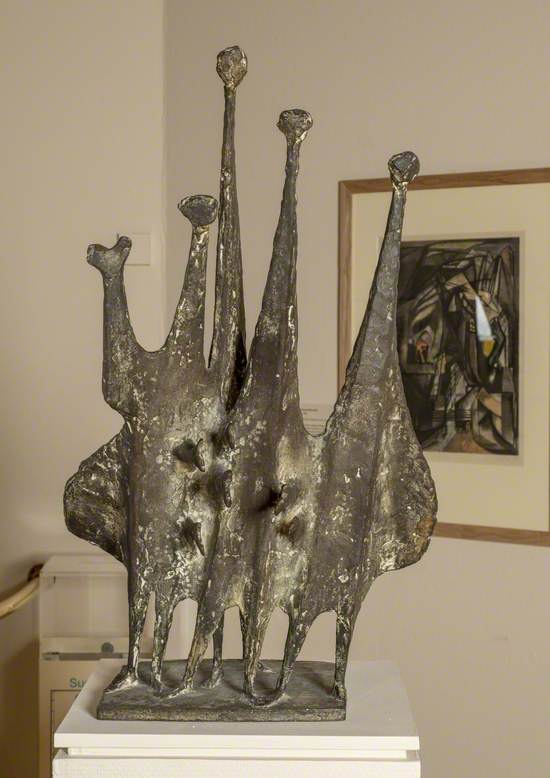
World War I to the Present Day
Kenneth Armitage joined the Bath School of Art (later Bath Academy) as Head of Sculpture in 1946. Soon it relocated to the Wiltshire town of Corsham, where he was based for ten years. Using a tin hut as a studio he produced a series of 'linked-figure' sculptures out of wire mesh and plaster. Their taut, streamlined shapes reflected his love of engineering structures and modern architecture. People in the Wind is also reminiscent of the silhouettes of aircraft; Armitage was a trainer in aircraft recognition during World War II.
This sculpture received international exposure and contributed to Armitage’s meteoric rise to fame.
Kenneth Armitage (1916–2002)
Bronze
H 65 x W 39 x D 32.5 cm
Victoria Art Gallery
World War I to the Present Day
1958
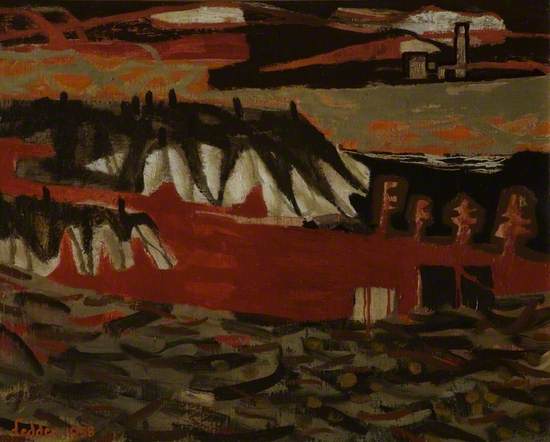
World War I to the Present Day
Mary Fedden was born in Bristol and achieved national success early in life. After studying at the Slade School of Art she became known for her mural paintings, such as those for the 1951 Festival of Britain, the P&O liner Canberra and Charing Cross Hospital.
1958, the year in which Fedden painted this picture, was something of a turning point in her career, as she was appointed the first woman tutor at the Royal College of Art.
Albi is a town in southern France. It is about fifty miles from Toulouse.
World War I to the Present Day
Like many other artists represented here, Gillian Ayres was on the staff of the Bath Academy of Art. Ayres' approach was not to teach according to set formulae. Instead she developed a more student-orientated style, a prototype for the tutorial system still in use today, whereby students are encouraged to follow their own lines of creative investigation.
Sun Up dates from her period at the Academy. She has combined vigorous brushwork and the throwing of pigment at the canvas with the free use of turpentine as a colour thinner, allowing the paint to stain, dribble and splatter. The effect is to convey a sense of day chasing night, shape and colour supplanting darkness and obscurity.
World War I to the Present Day
During the 1960s Peter Blake became one of the most successful figures in British art with his iconic cover for The Beatles' album 'Sergeant Pepper's Lonely Hearts Club Band'. In 1969 he moved to Wellow, near Bath. Together with other artists who had made similar transitions to the countryside, Blake set up the 'Brotherhood of Ruralists' in 1975. It was an informal group whose stated aims were 'to paint about love, beauty, joy, sentiment and magic', aims perfectly represented by this little painting.
World War I to the Present Day
This work is about taste and identity. The form is based on ancient Greek urns. Classical pottery and sculpture has a long history of being associated with good taste and high status. Posh Art is designed to encourage us to think about what belongs in art galleries, and why.
World War I to the Present Day
Howard Hodgkin studied at the Camberwell School of Art and the Bath Academy of Art before going on to teach at the latter from 1955 to 1966.
Hodgkin's paint surfaces are built up in layers over years and will often be completely reworked more than once before the finished piece is released from the studio.
It is rare for Hodgkin to talk about the inspiration for his work, preferring the viewer to weave their own stories around his allusive paintings. The title is the only clue we are given.
Silence, like all Hodgkin's paintings, was painted on a piece of recycled wood, in this case the back of a 17th century Dutch frame.
World War I to the Present Day
World War I to the Present Day
Explore artists in this Curation
View all 79-
 Henry Herbert La Thangue (1859–1929)
Henry Herbert La Thangue (1859–1929) -
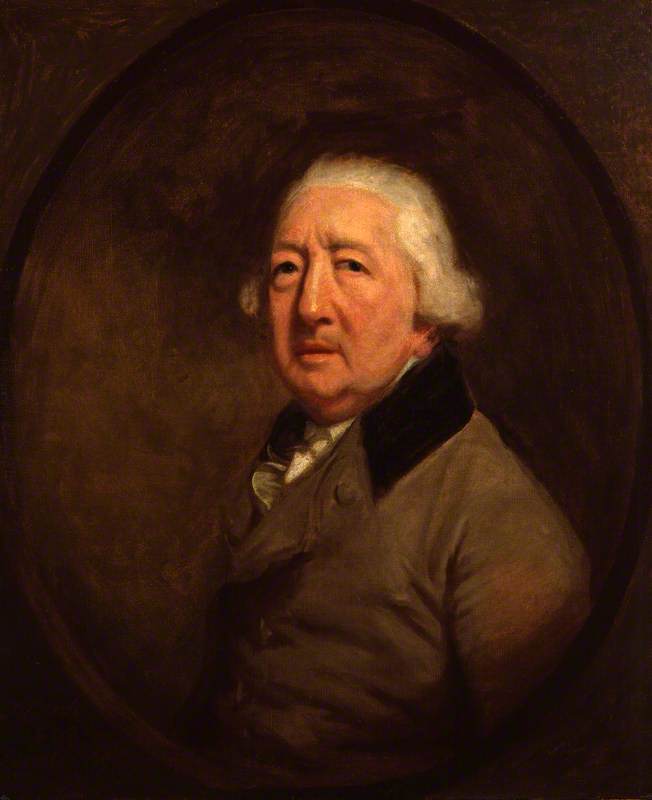 Thomas Beach (1738–1806)
Thomas Beach (1738–1806) -
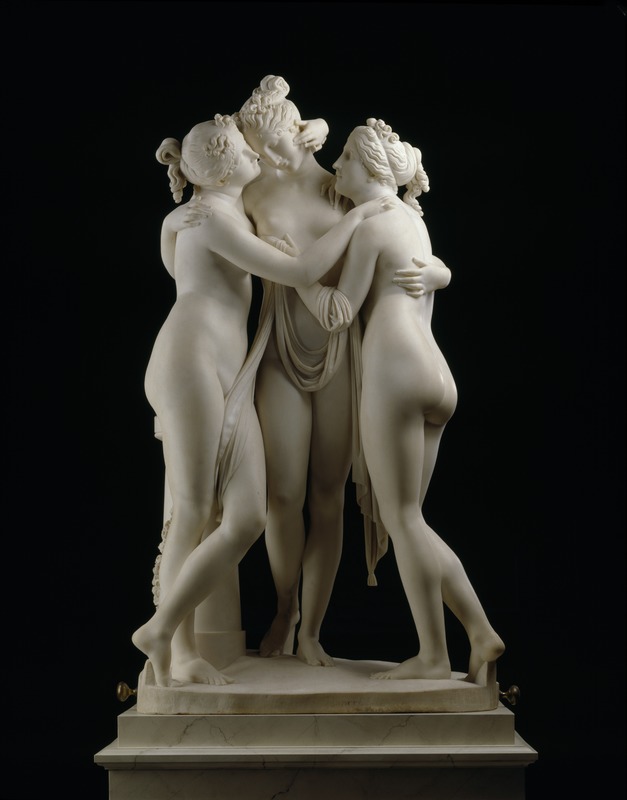 Antonio Canova (1757–1822)
Antonio Canova (1757–1822) -
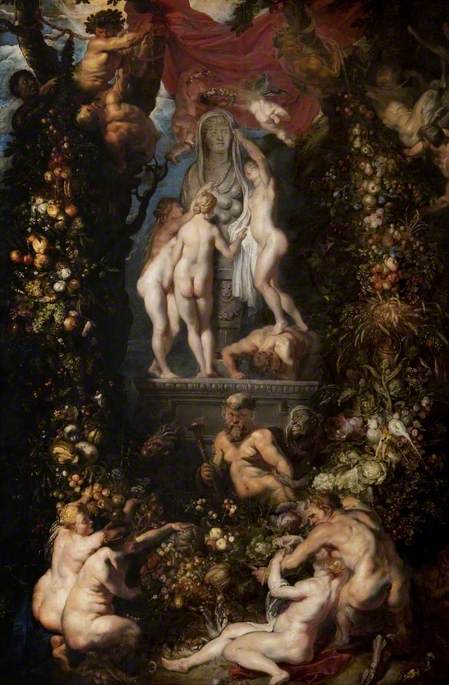 Jan Brueghel the elder (1568–1625)
Jan Brueghel the elder (1568–1625) -
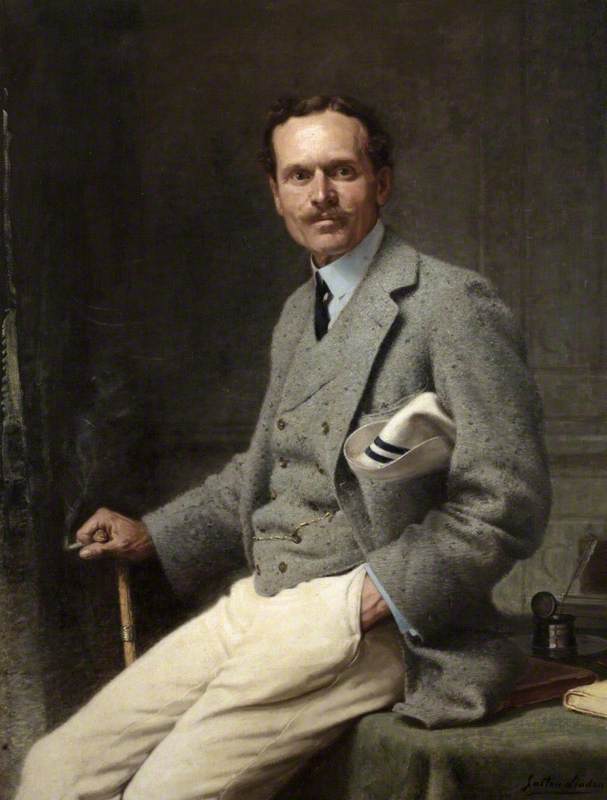 Gaston Linden (1861–1940)
Gaston Linden (1861–1940) -
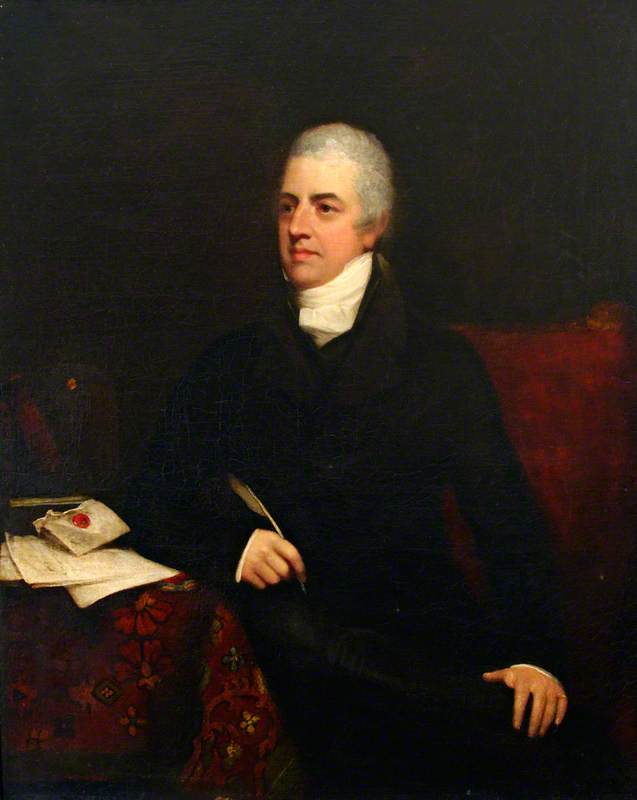 James Green (1771–1834)
James Green (1771–1834) -
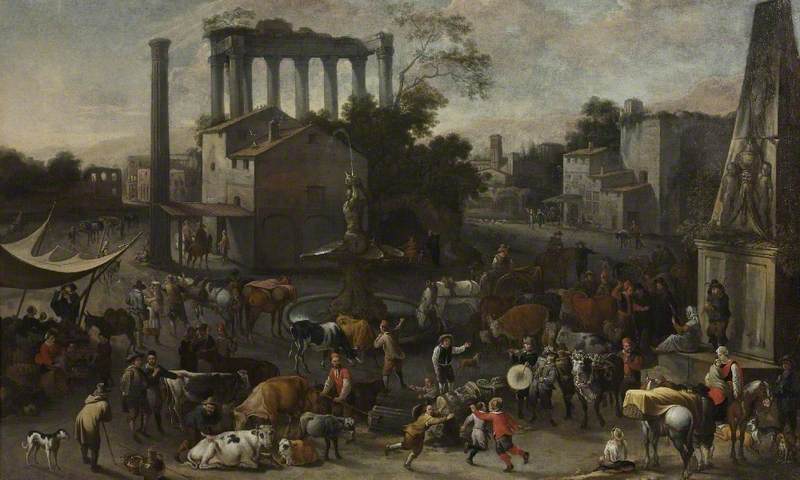 Adriaen de Bie (1593–1668)
Adriaen de Bie (1593–1668) -
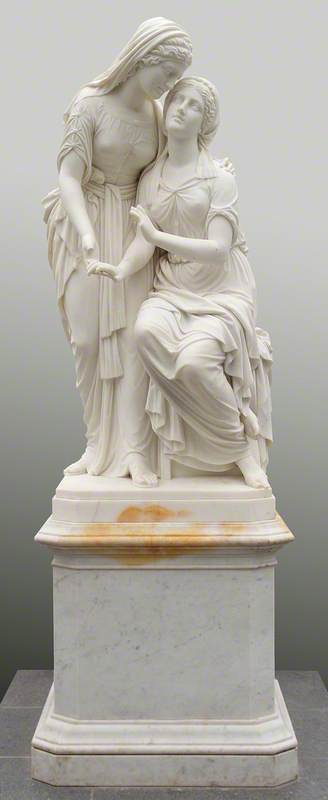 John Warrington Wood (1839–1886)
John Warrington Wood (1839–1886) -
 Thomas Hickey (1741–1824)
Thomas Hickey (1741–1824) -
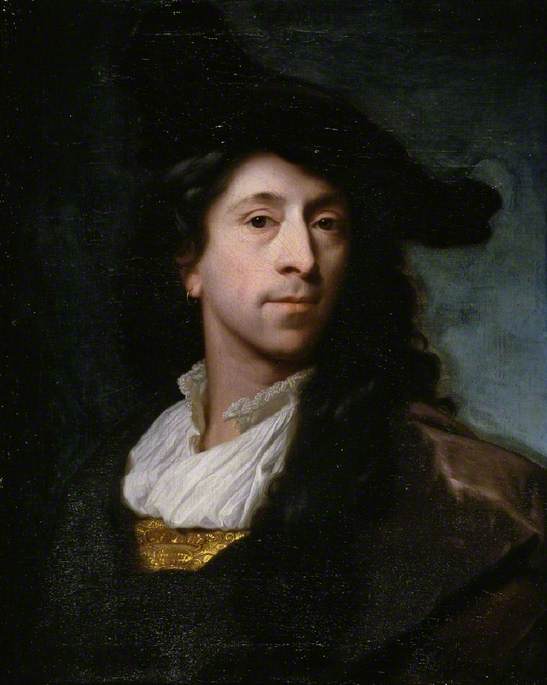 Godfried Schalcken (1643–1706)
Godfried Schalcken (1643–1706) - View all 79
